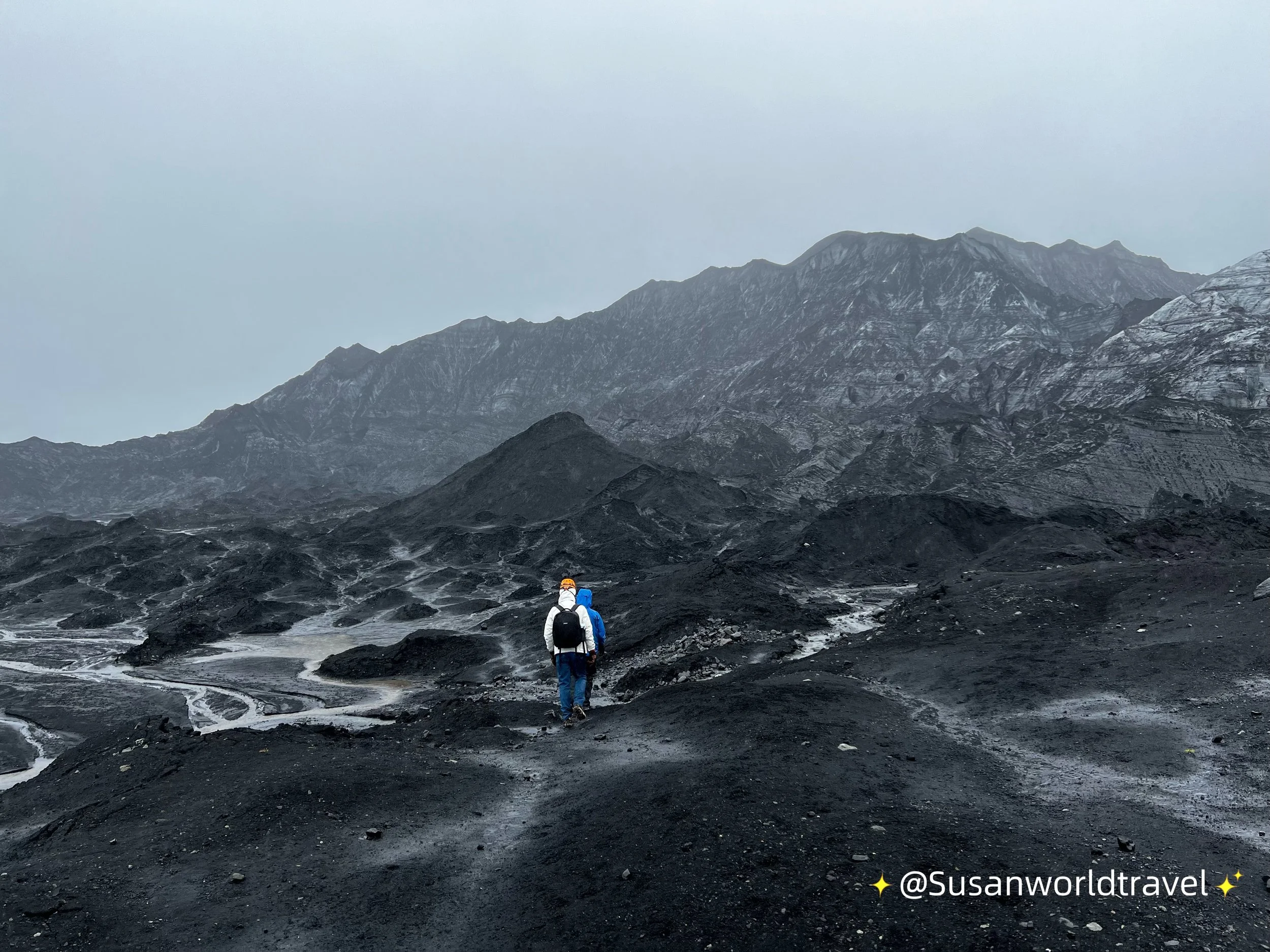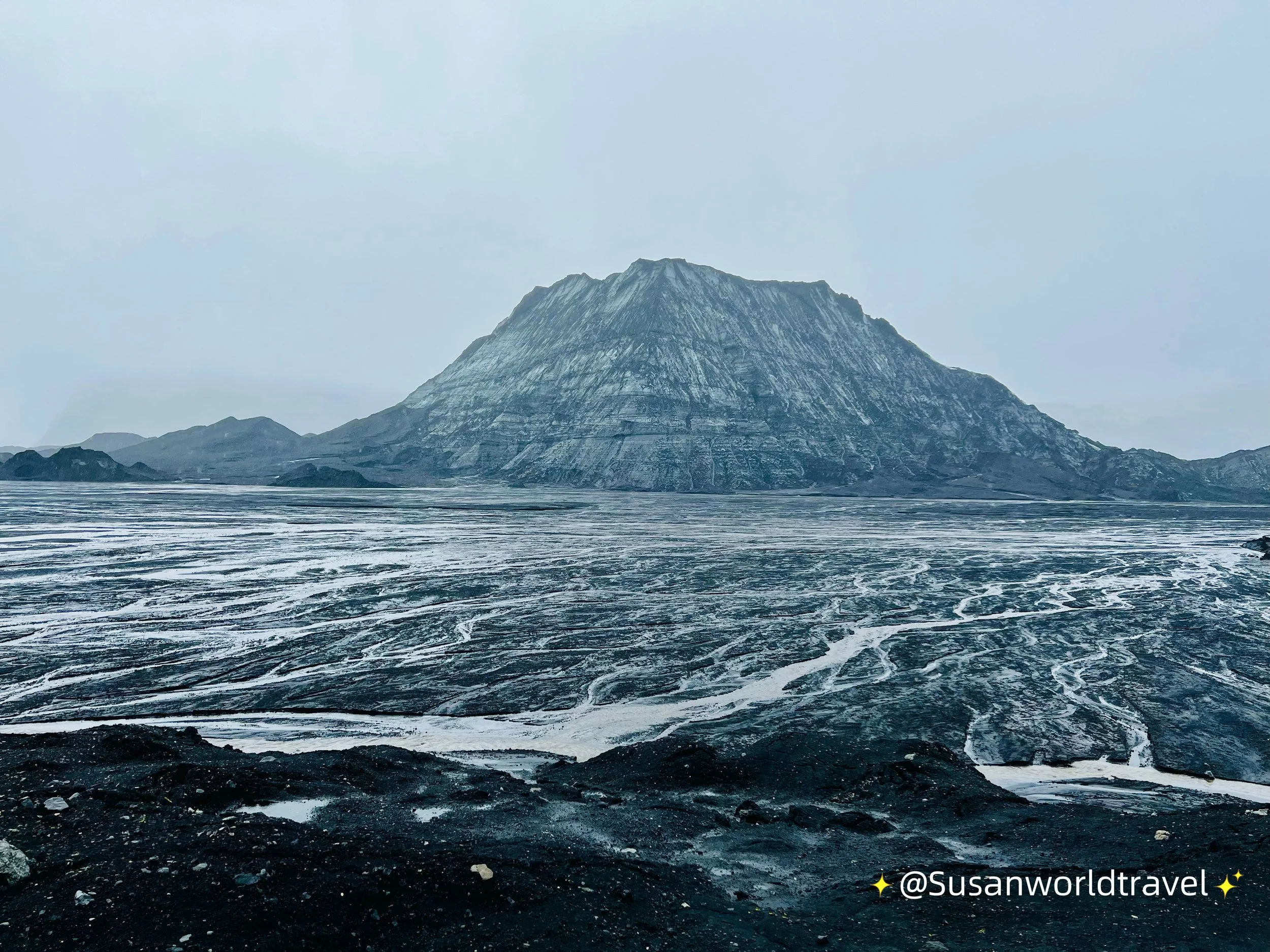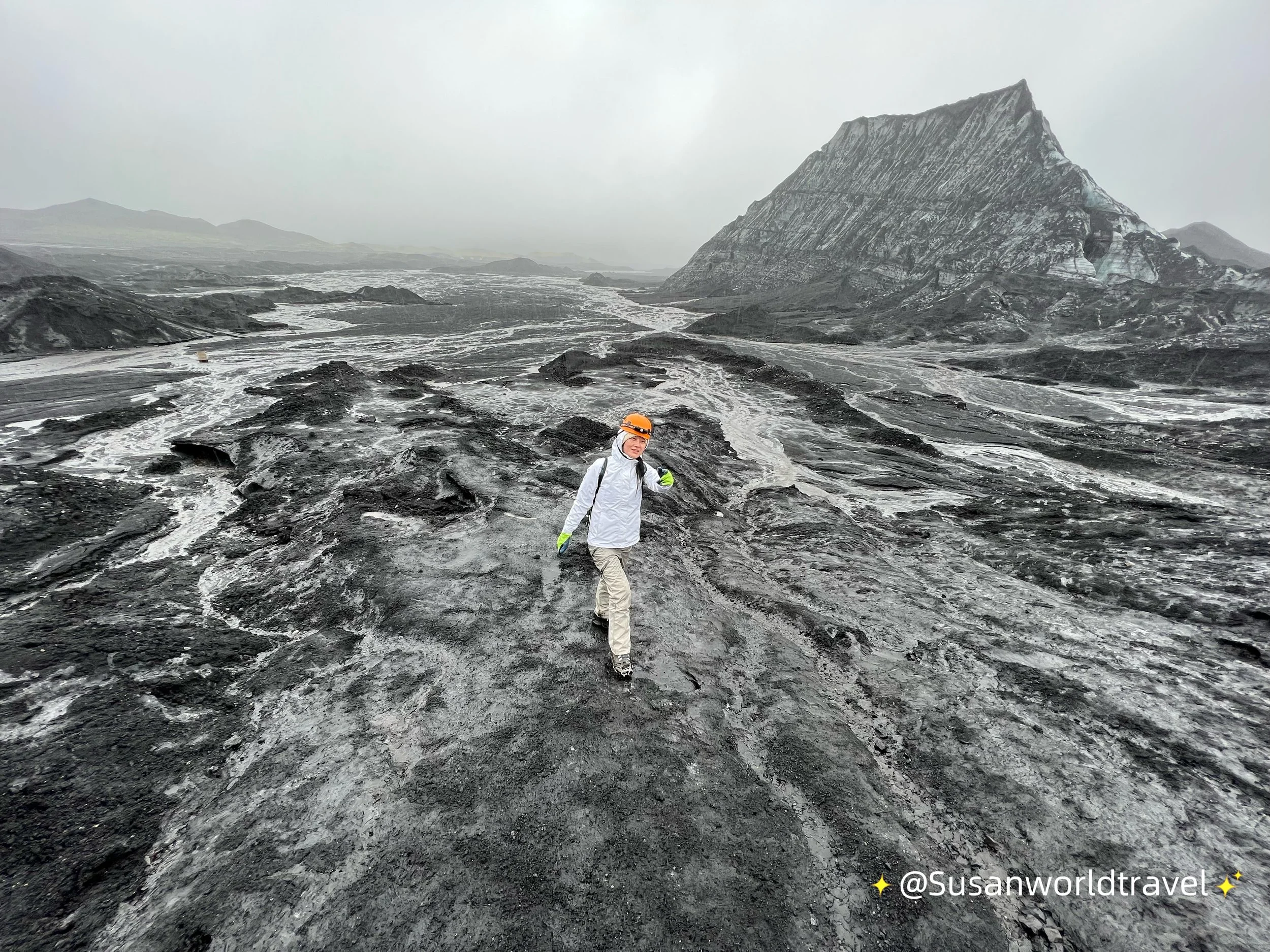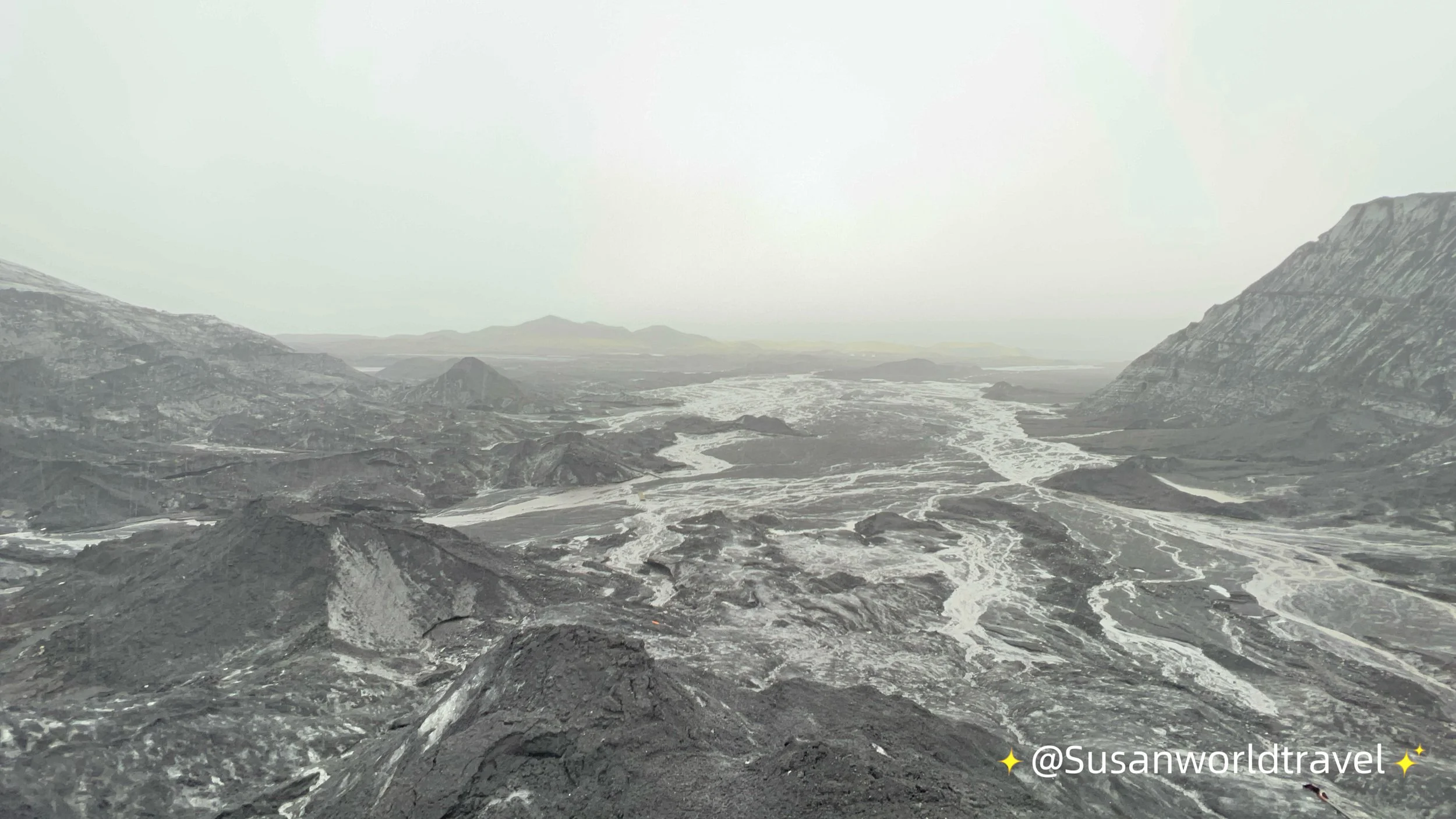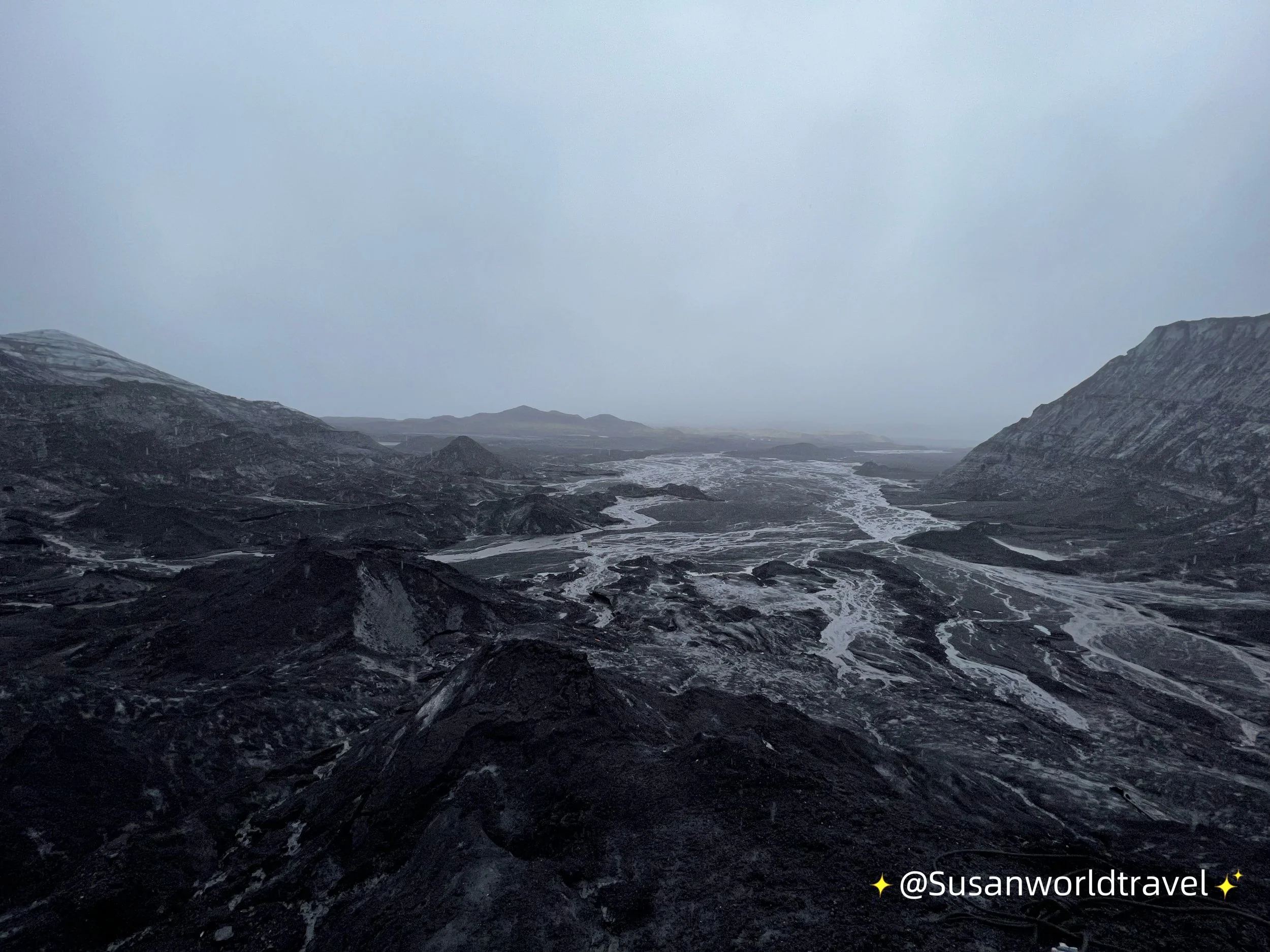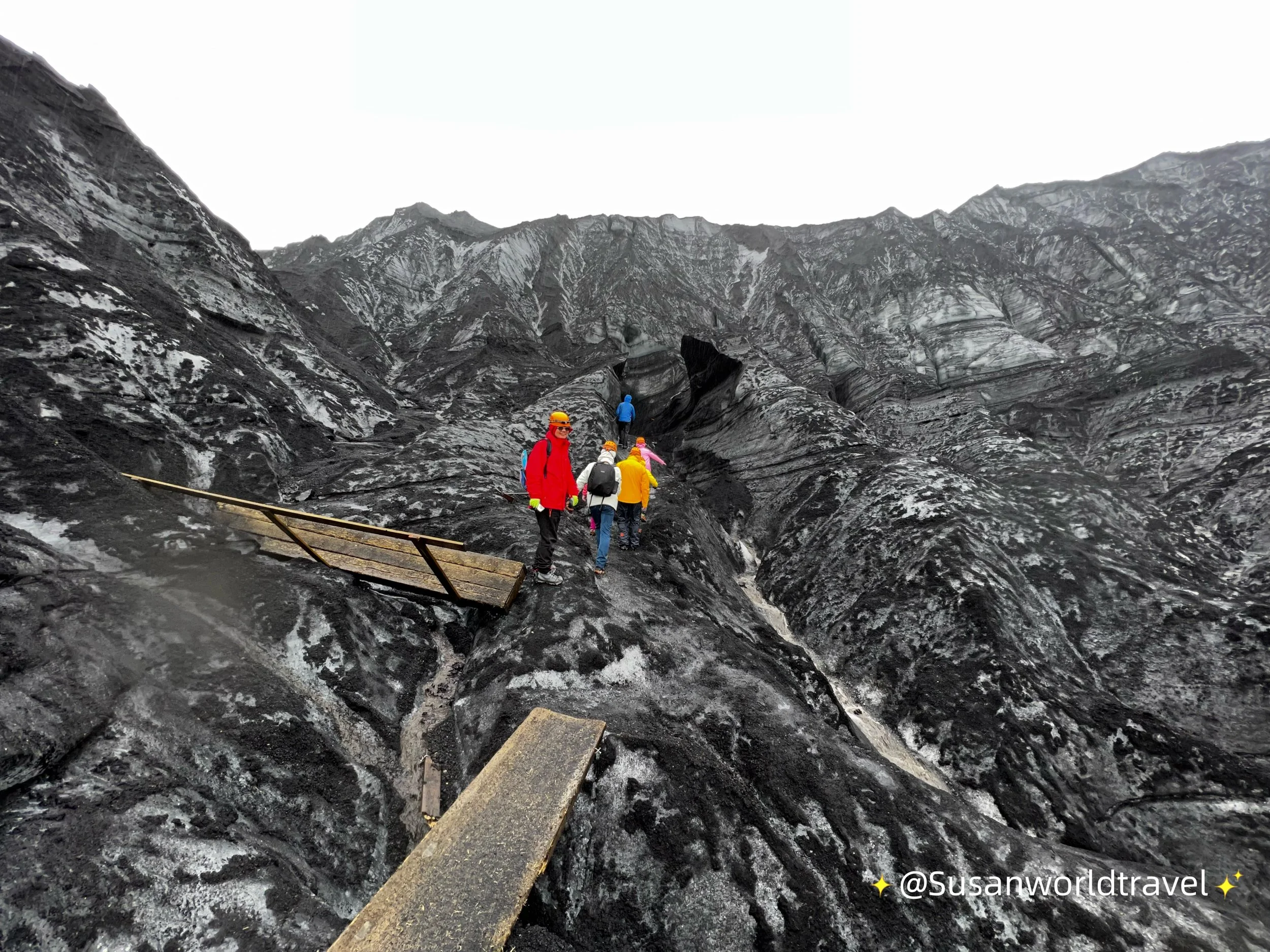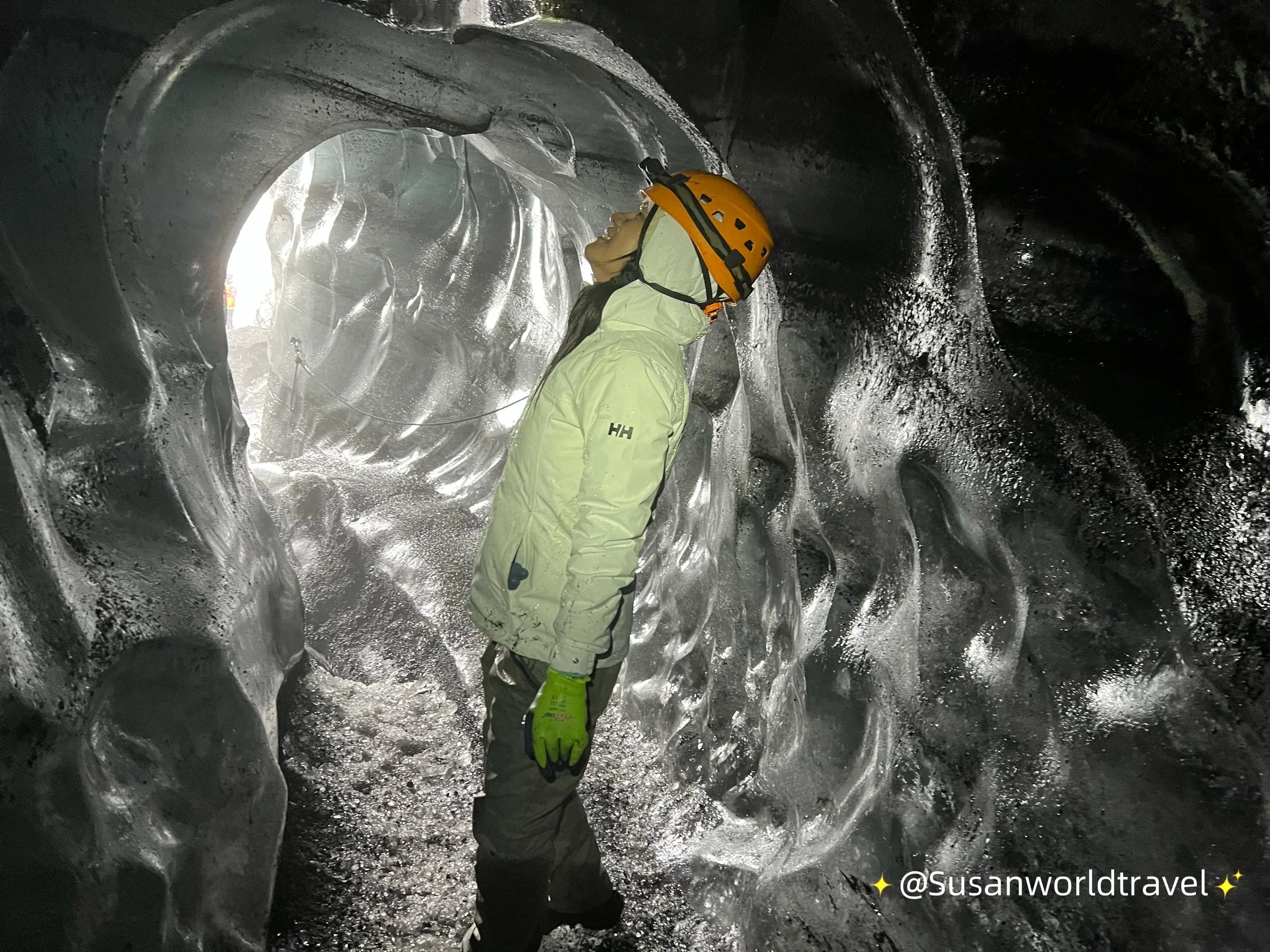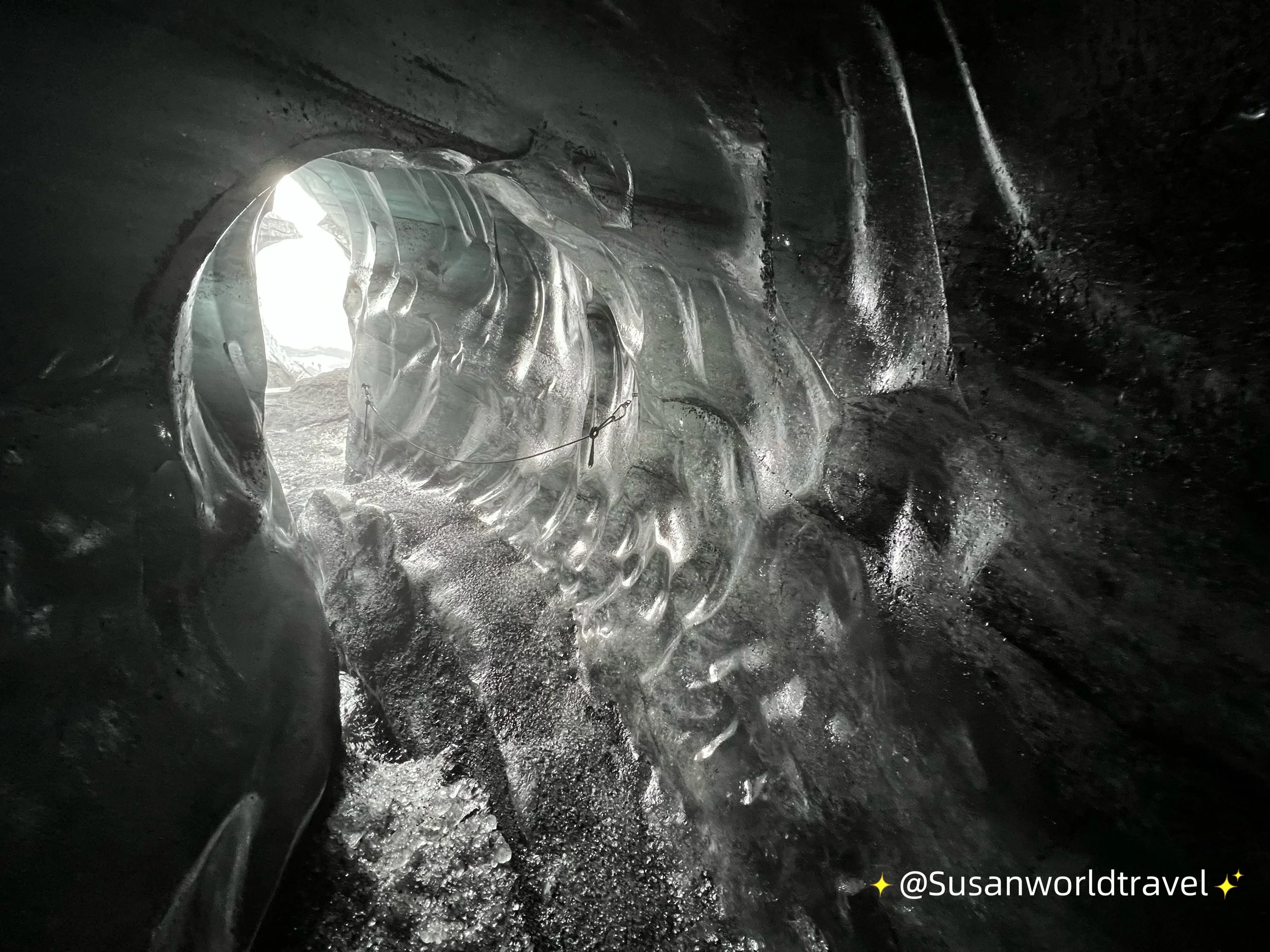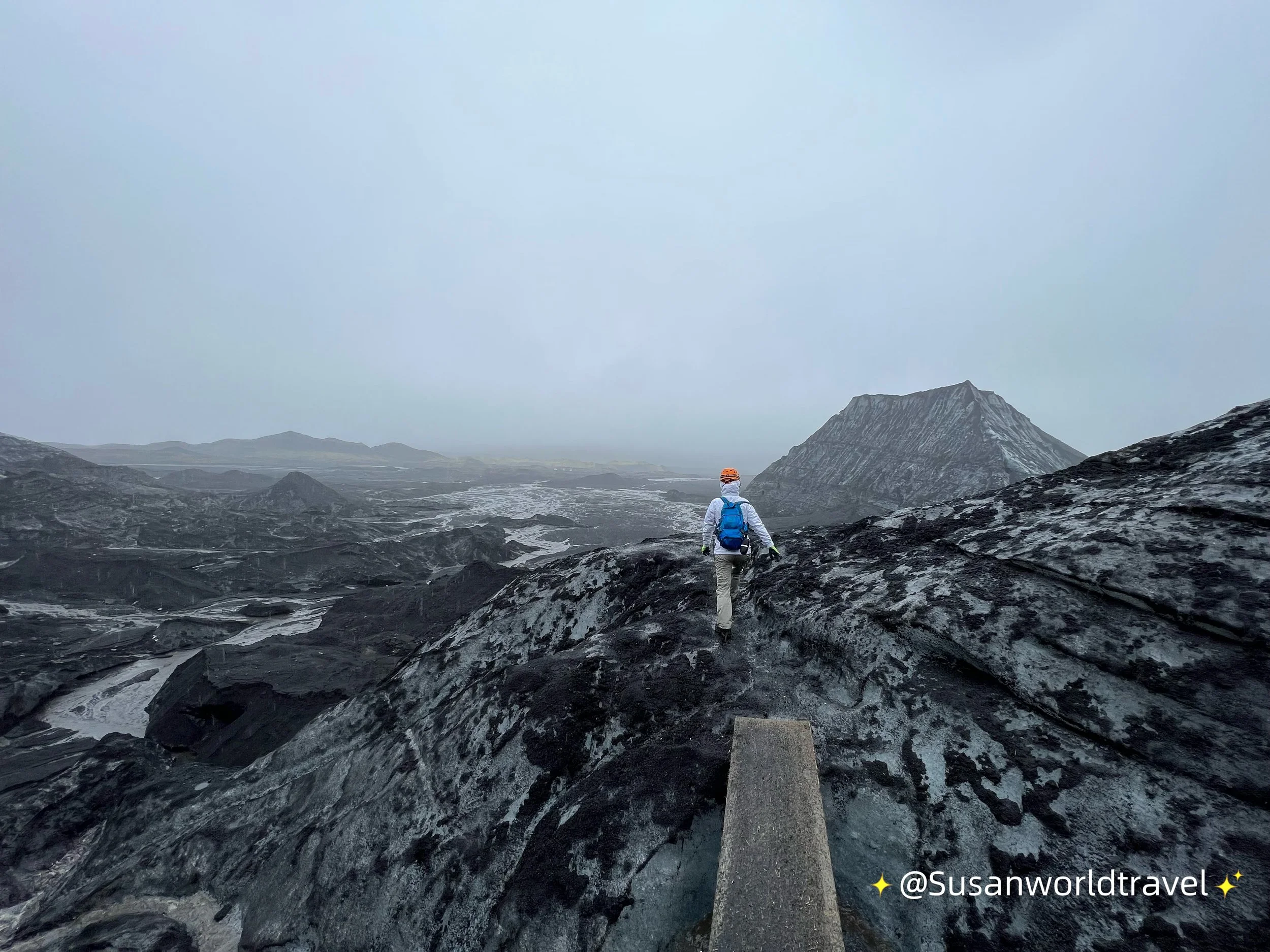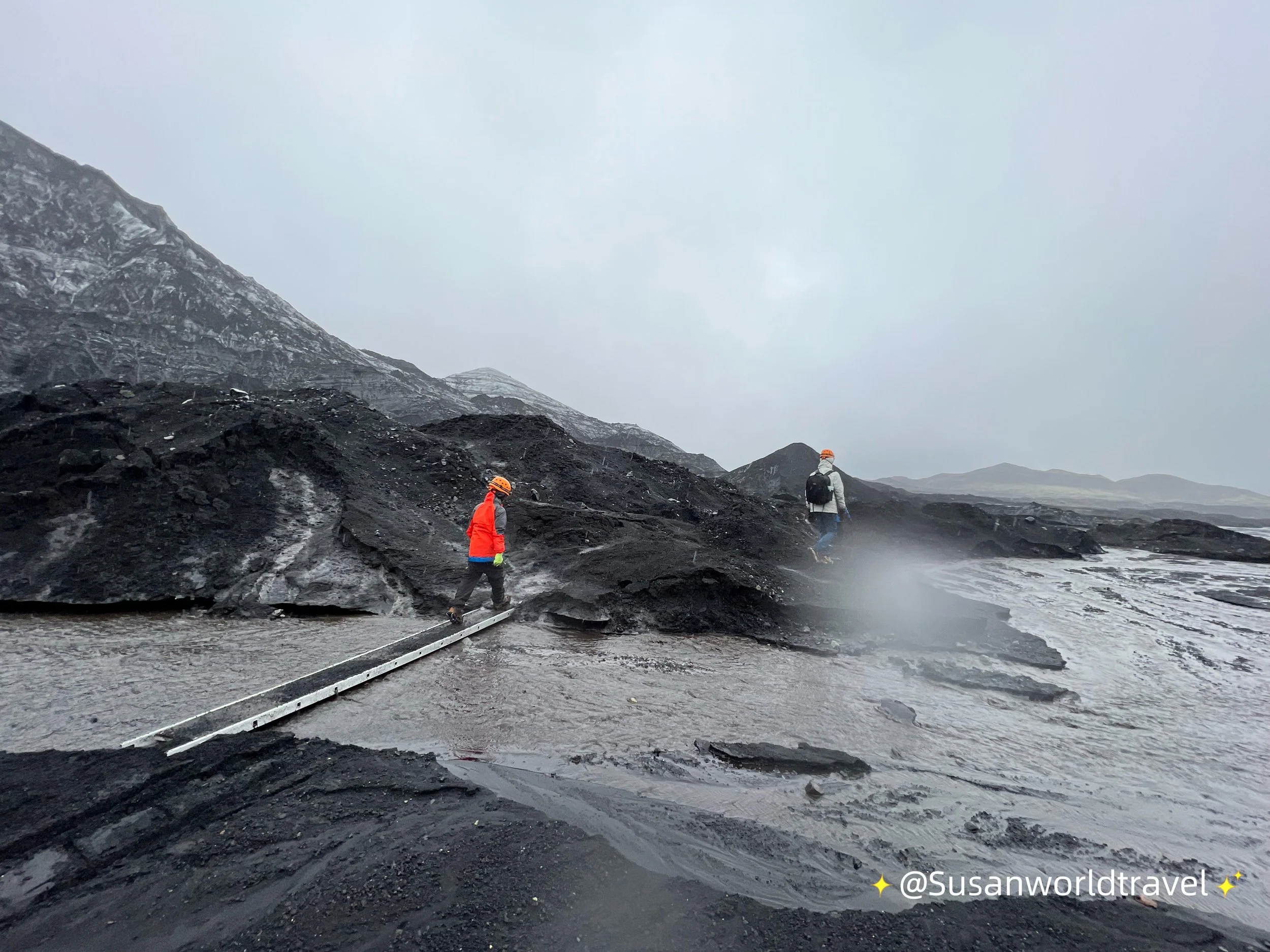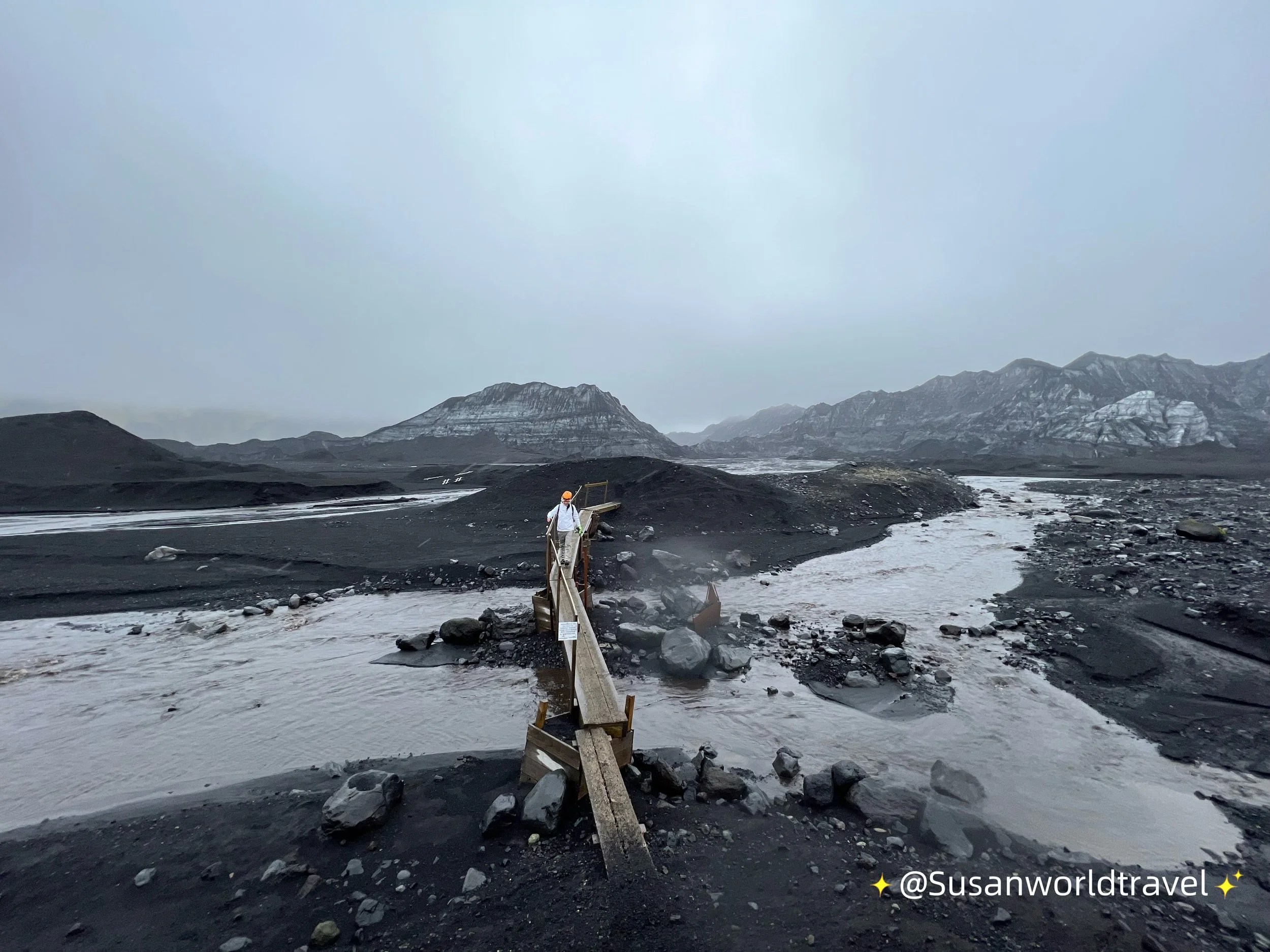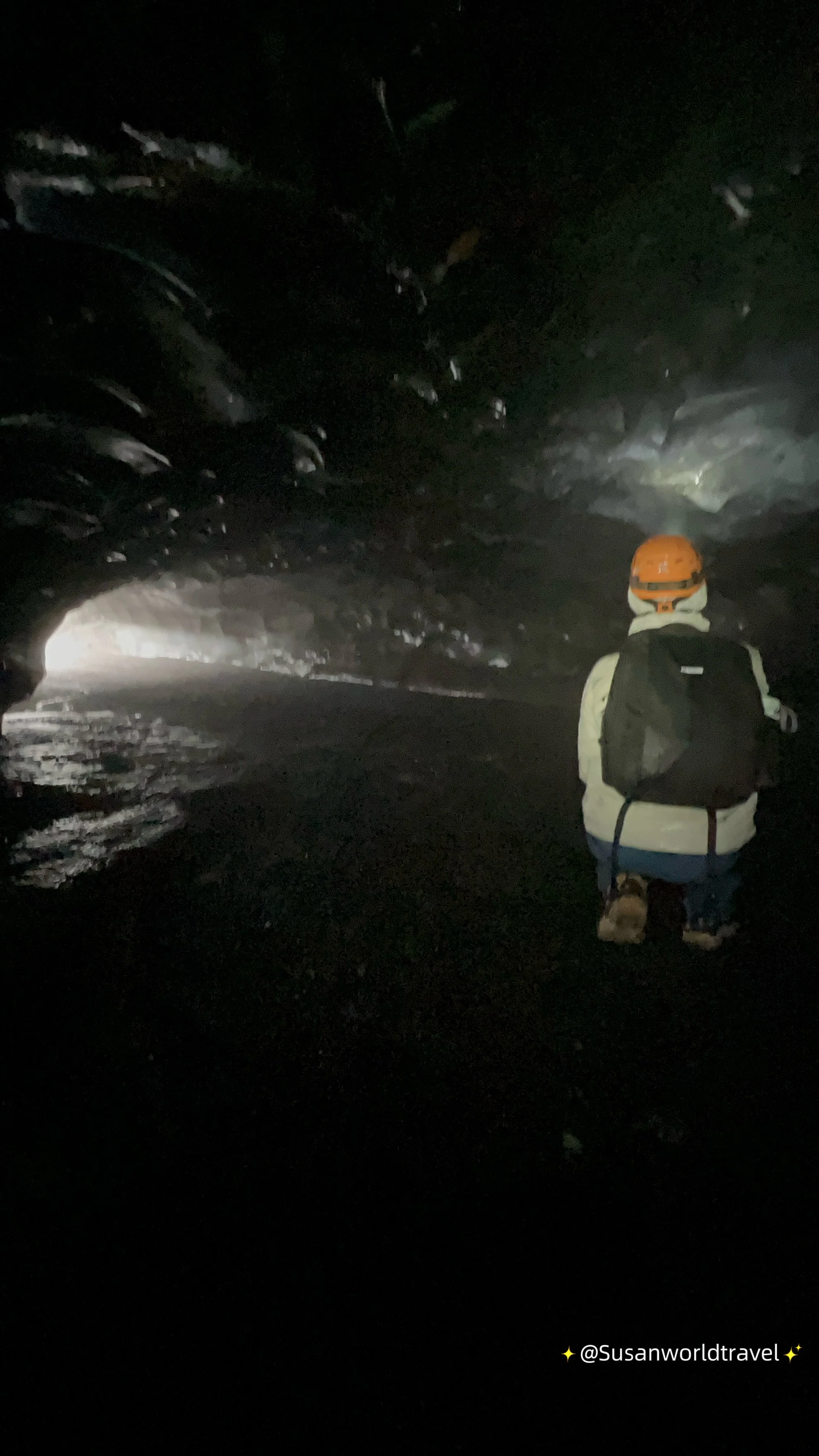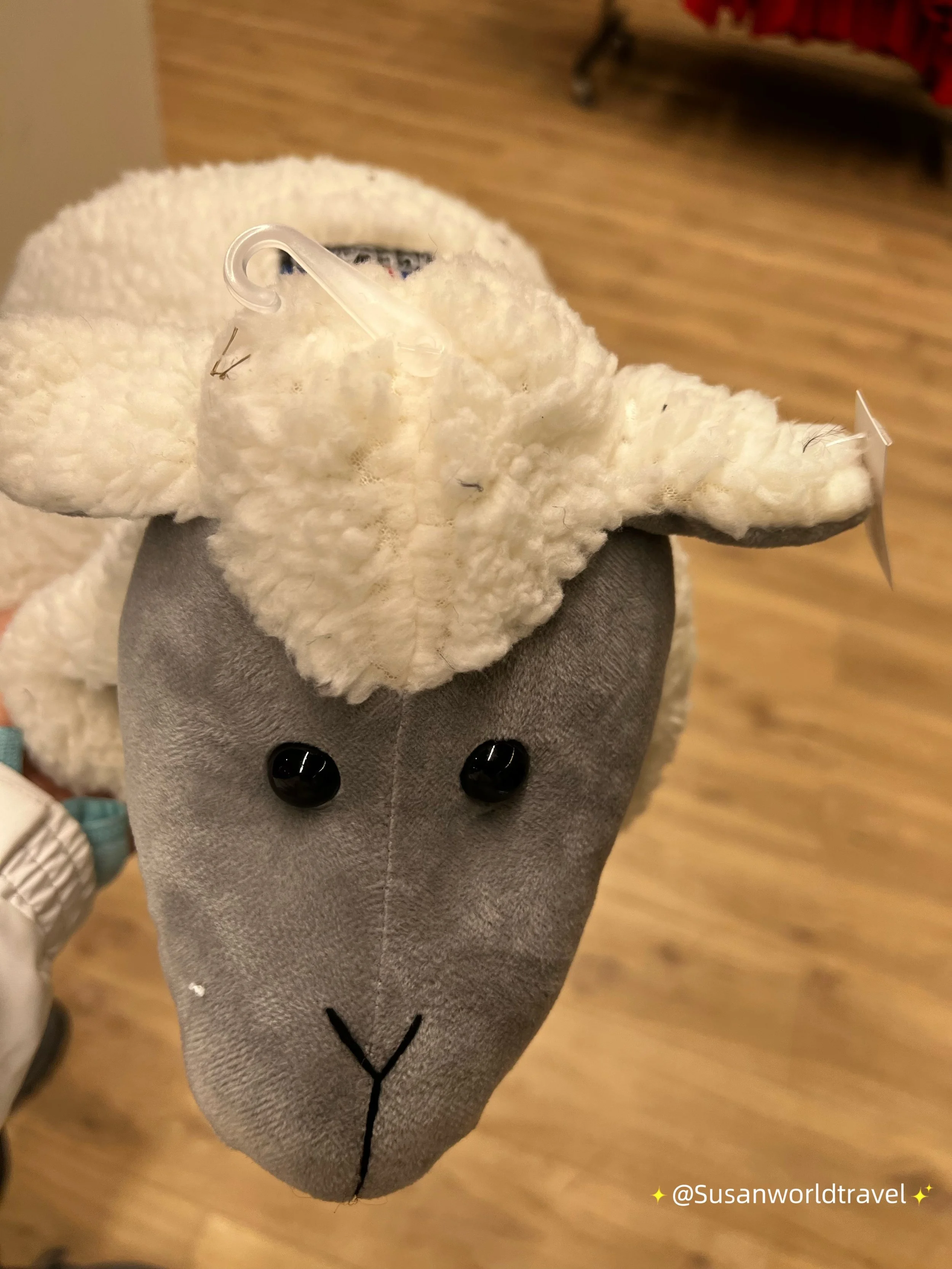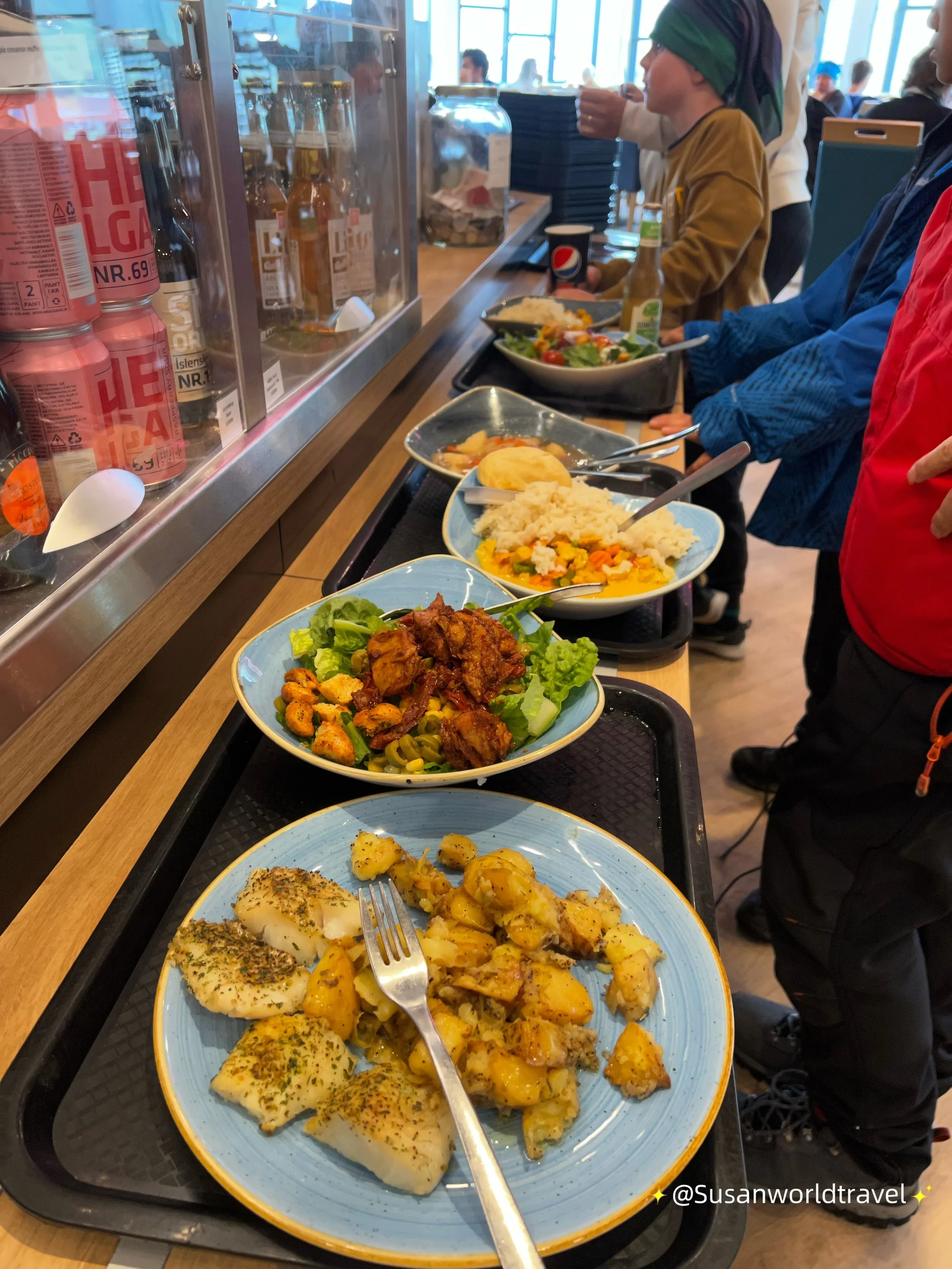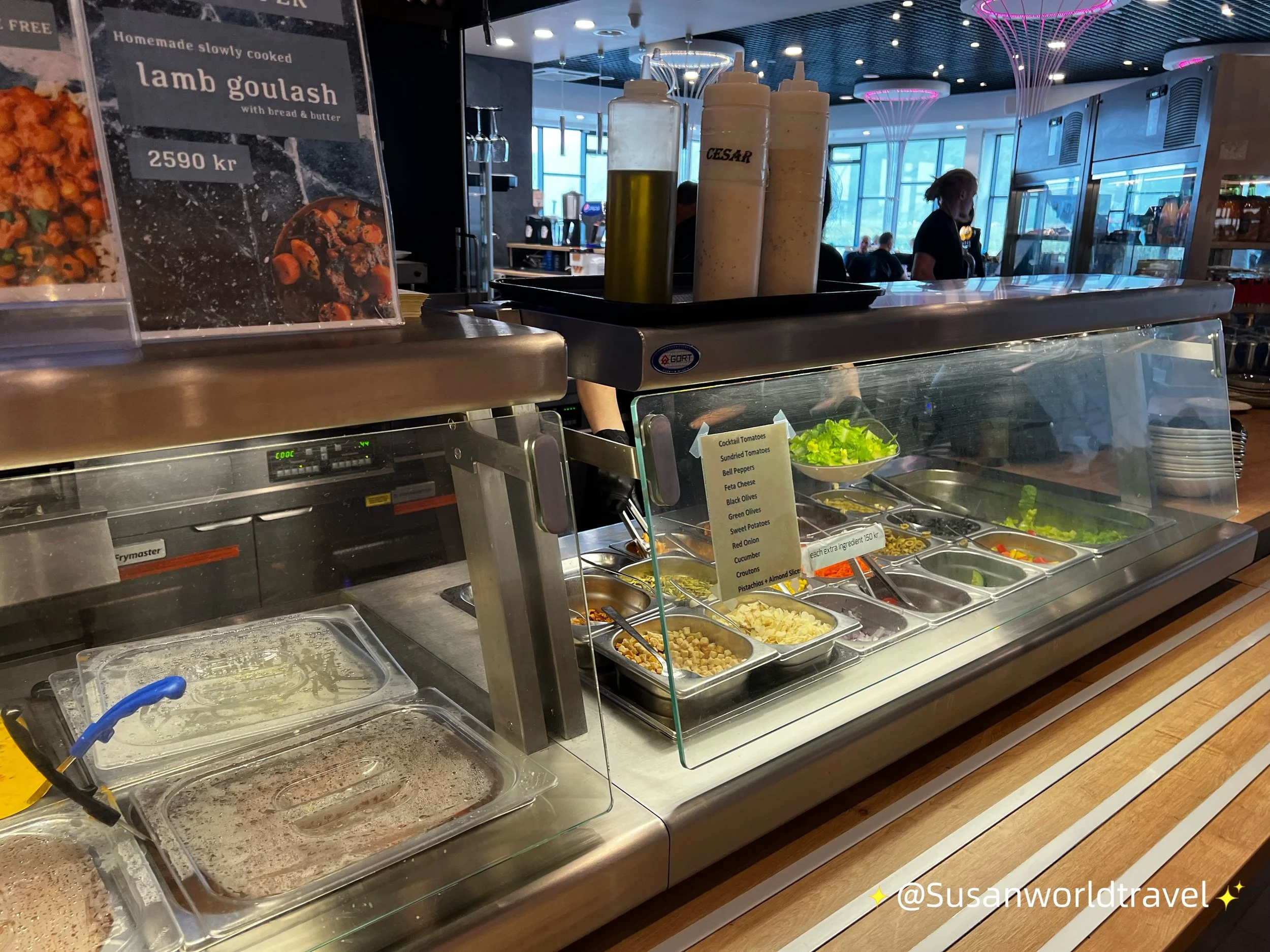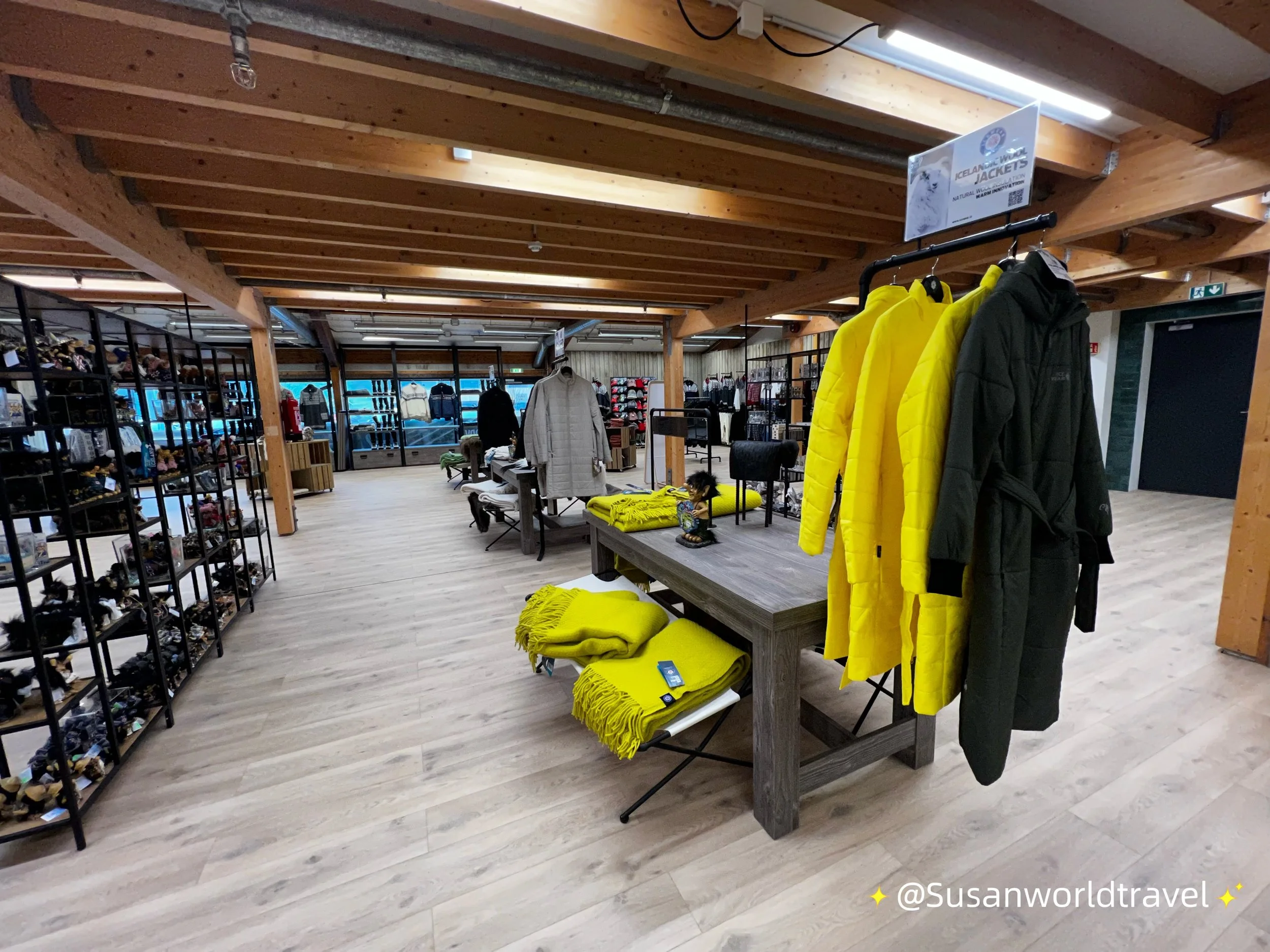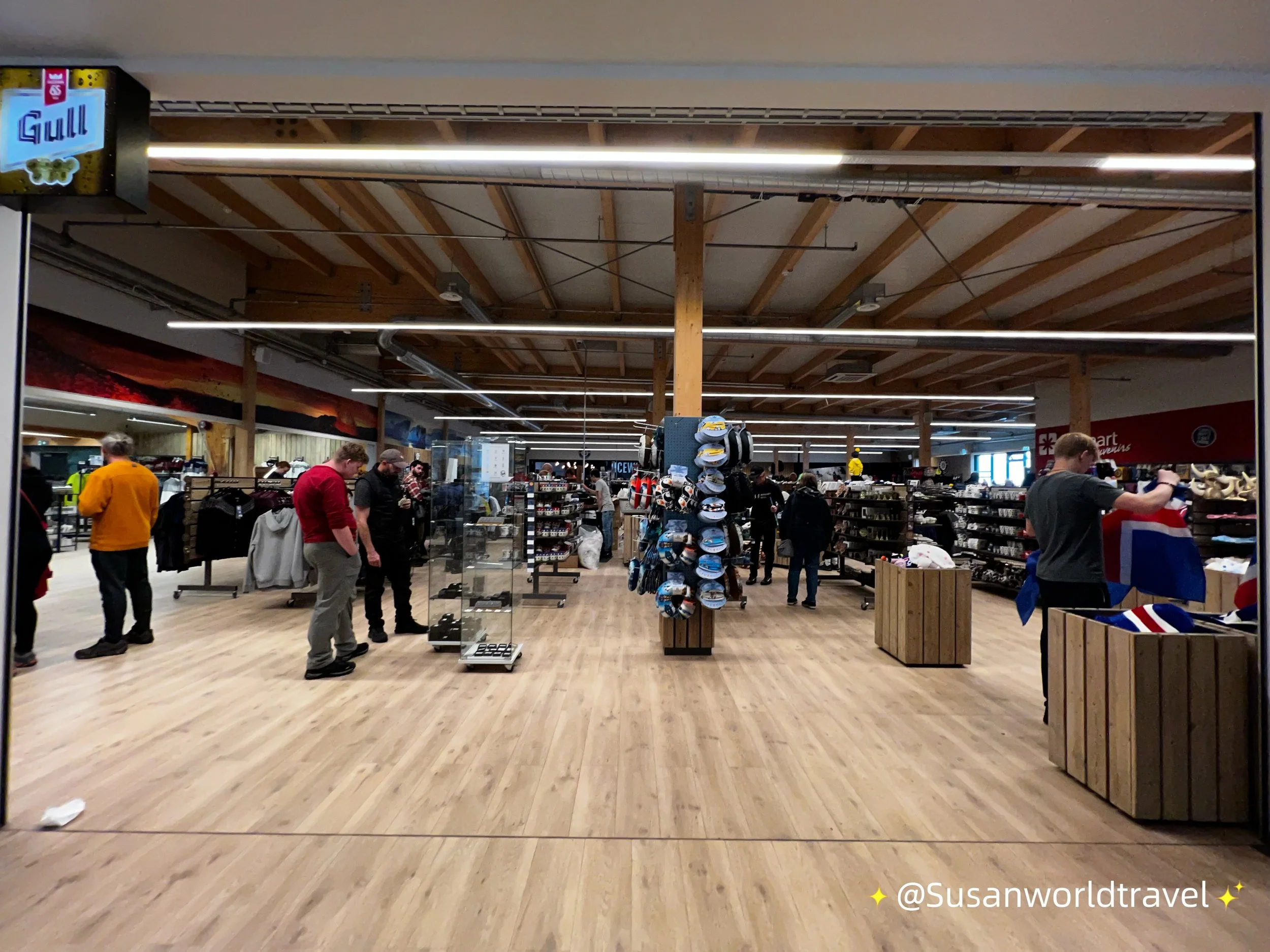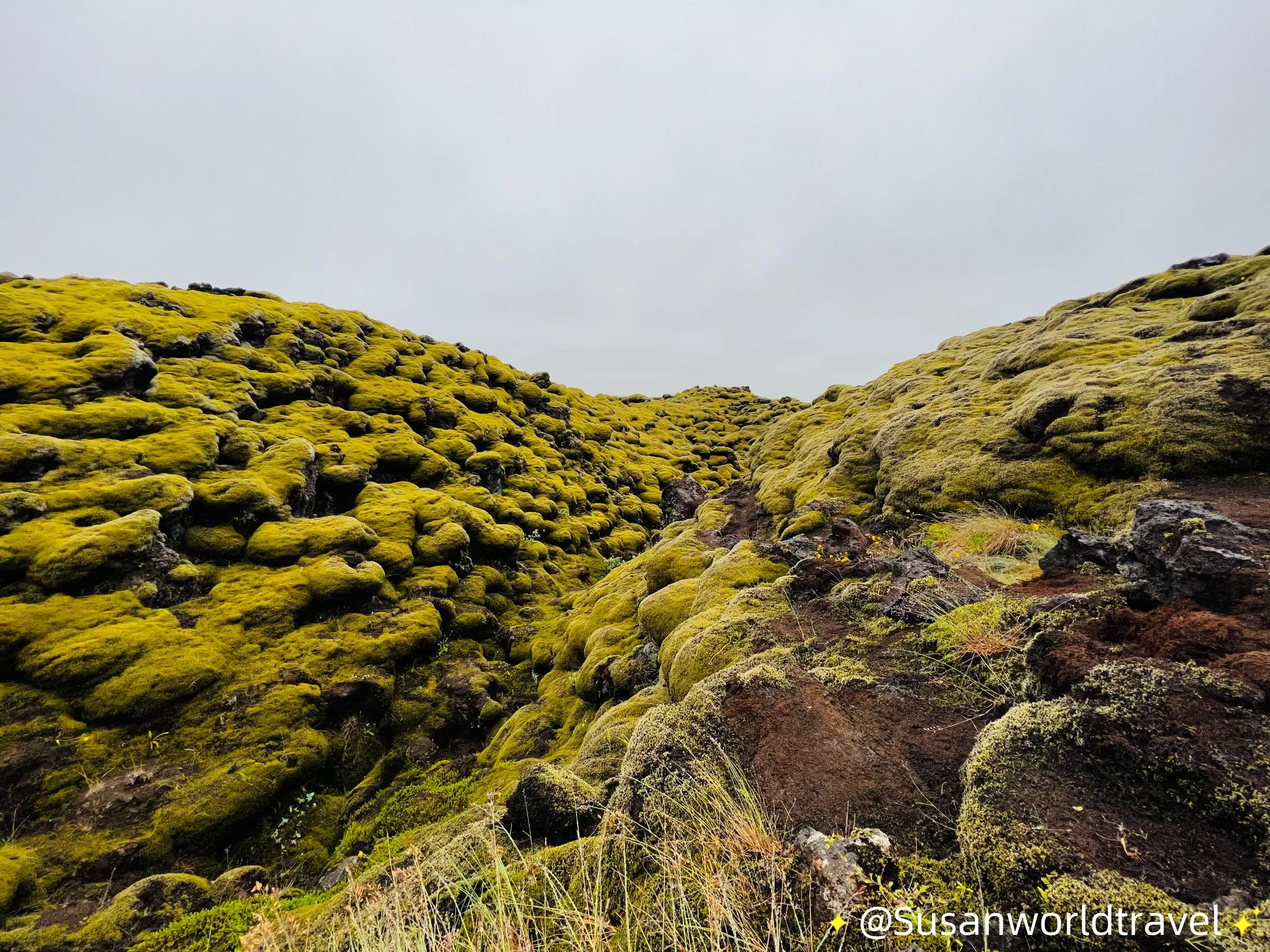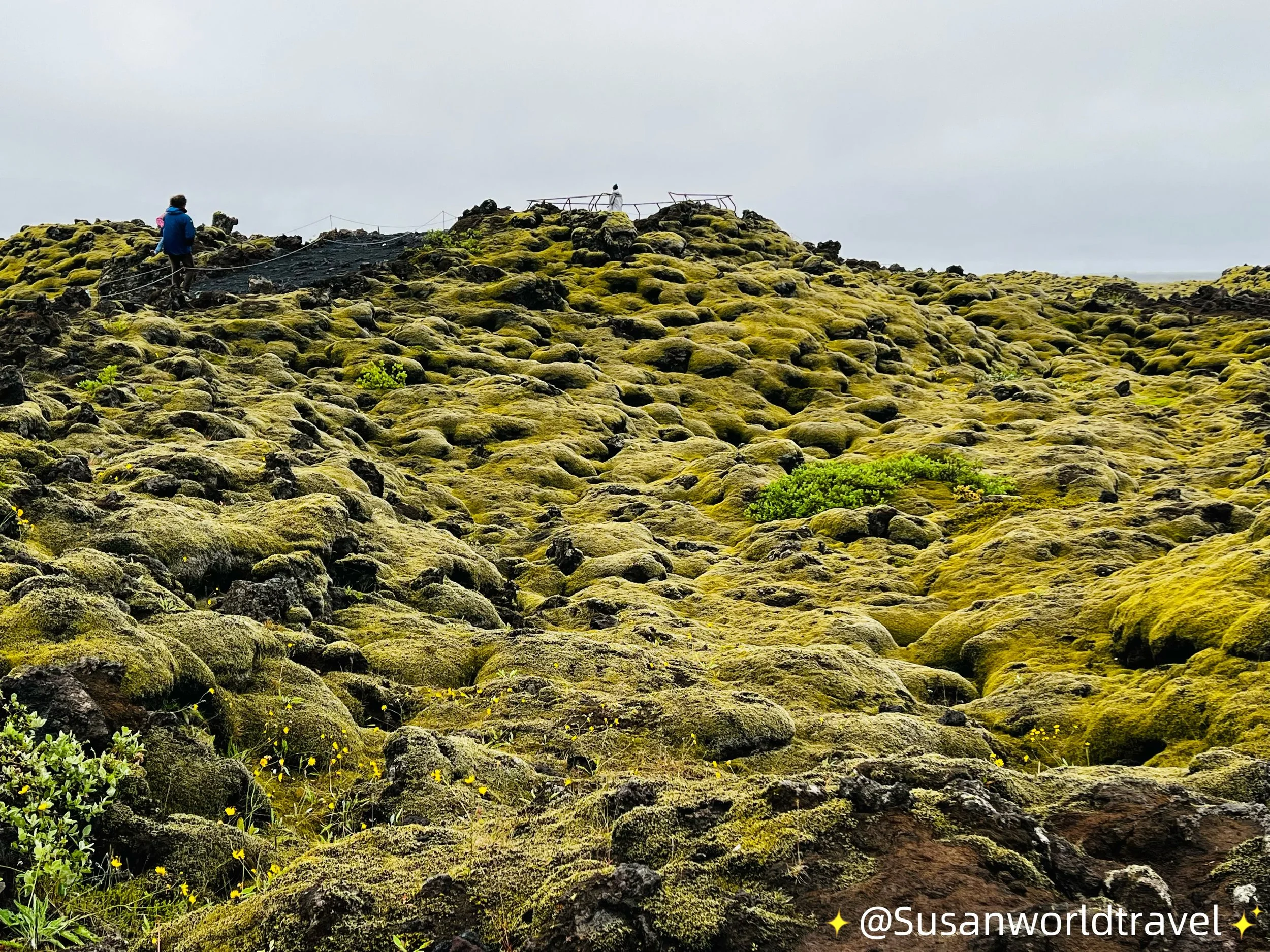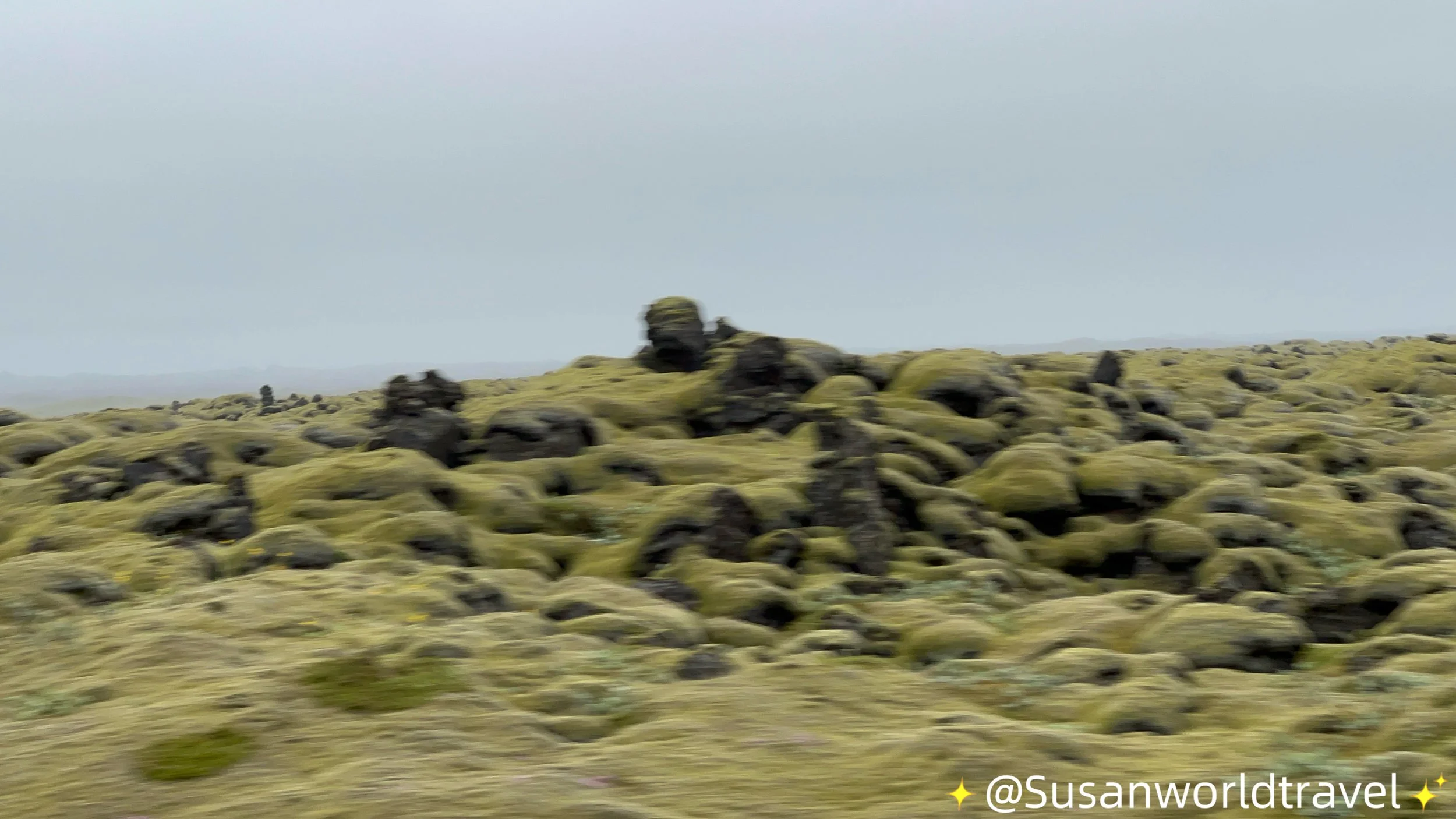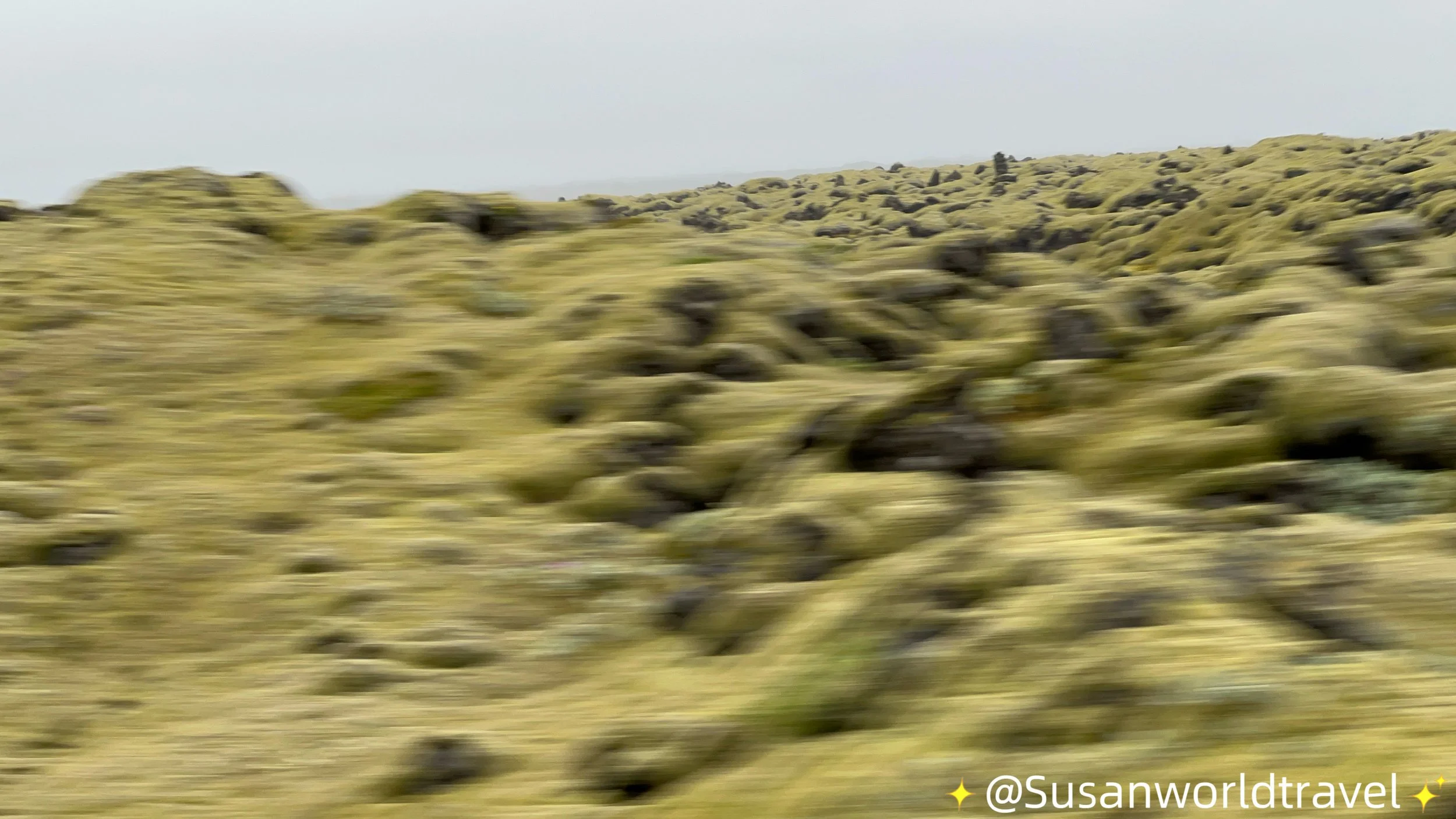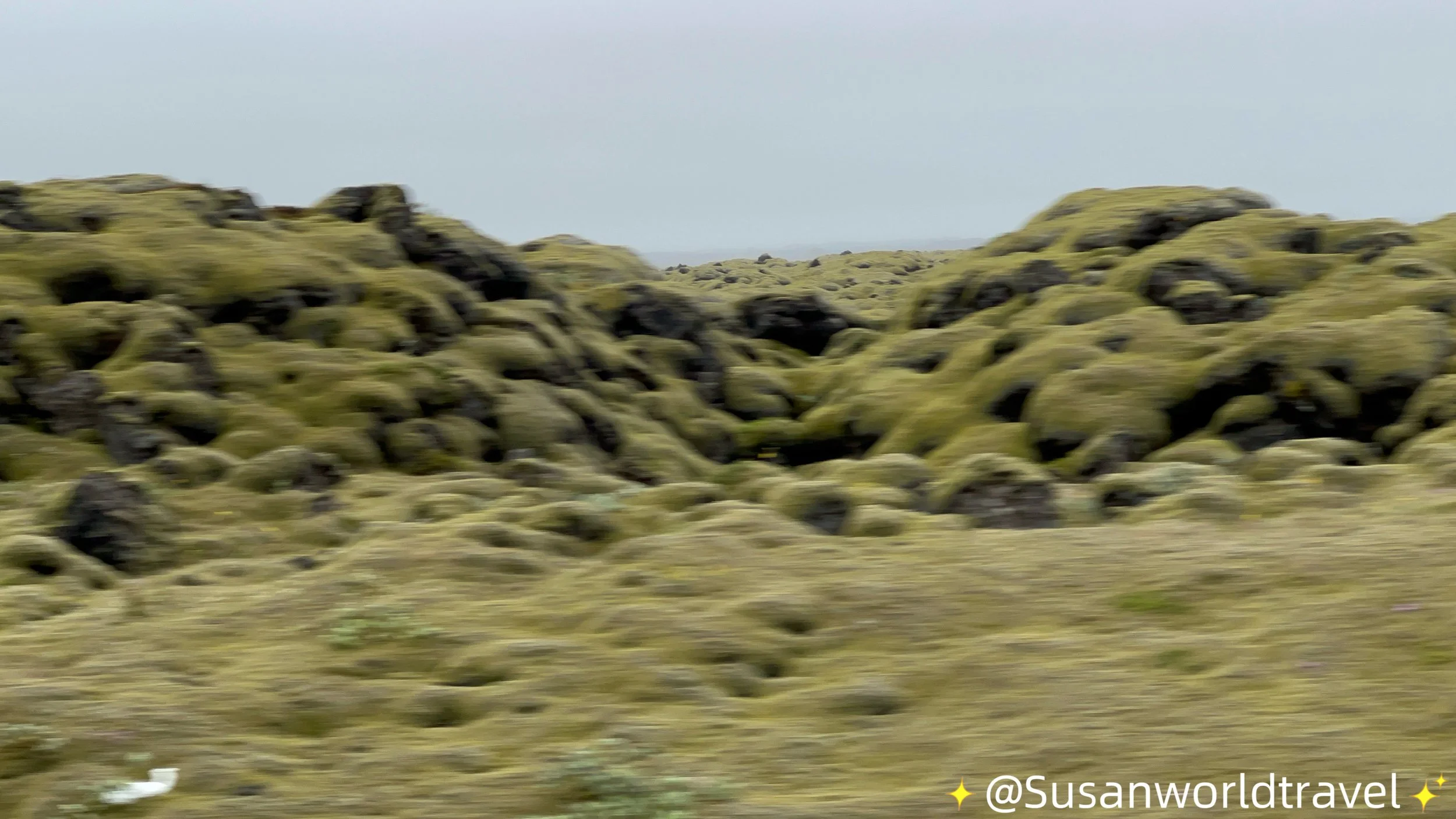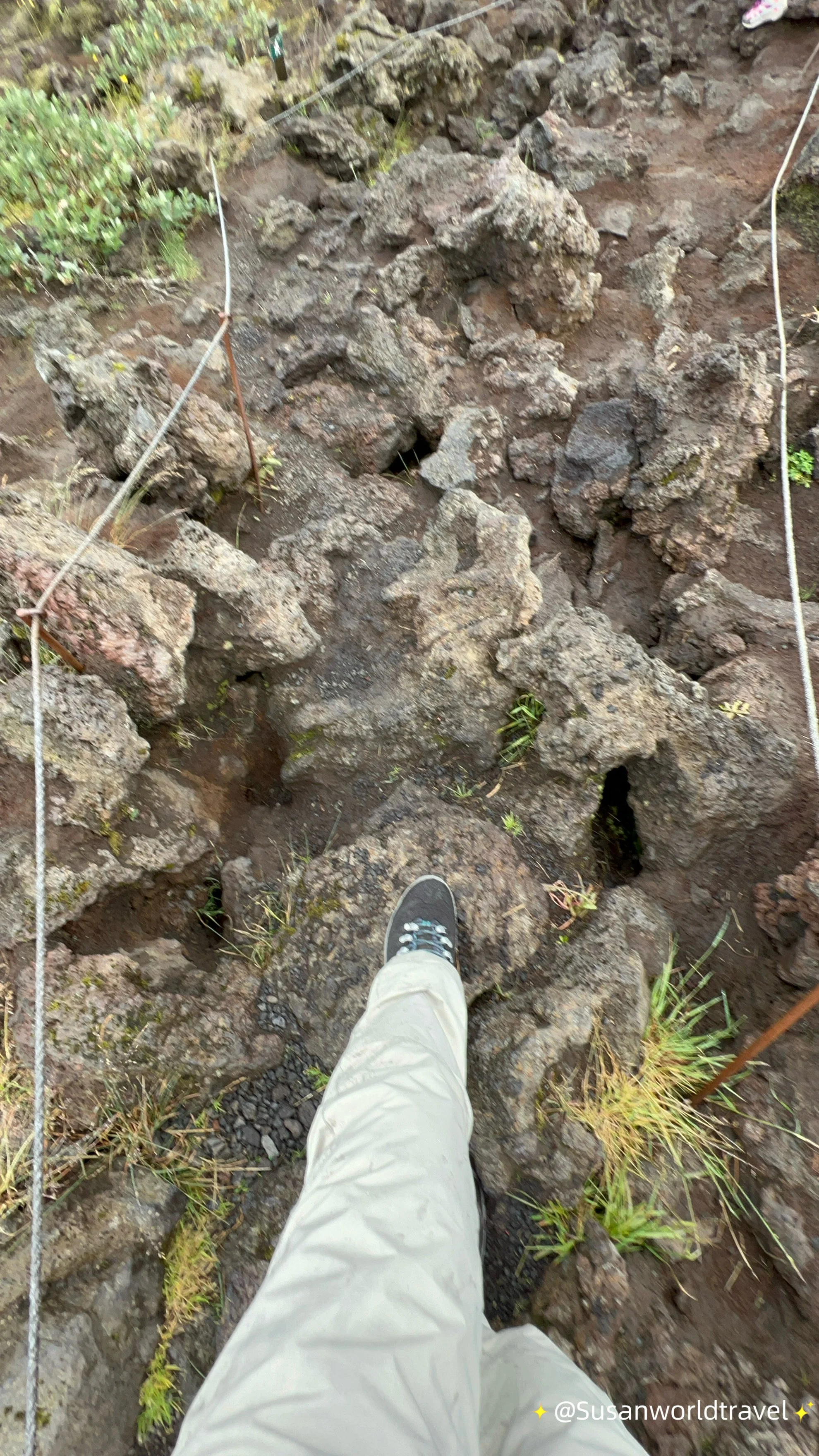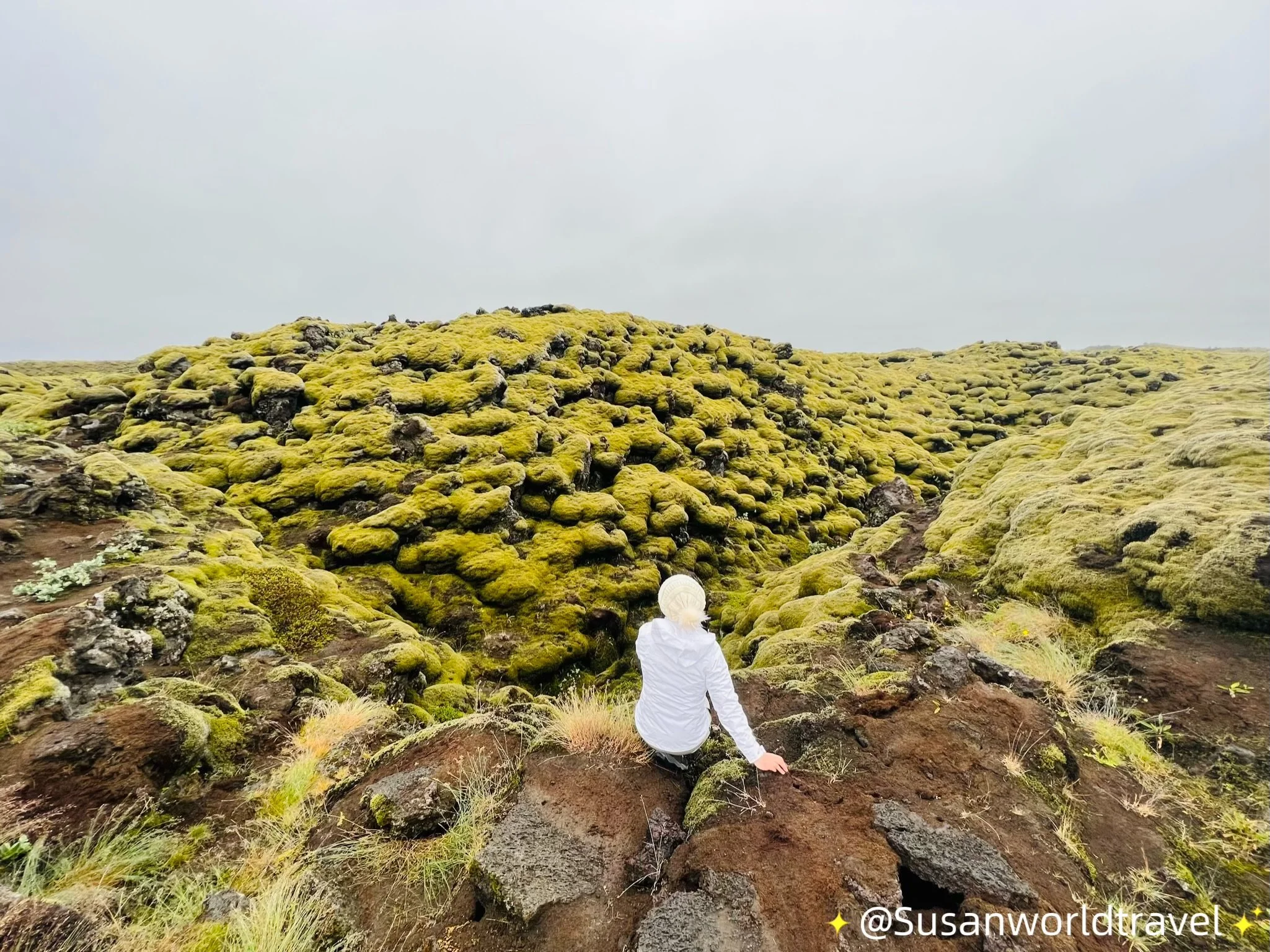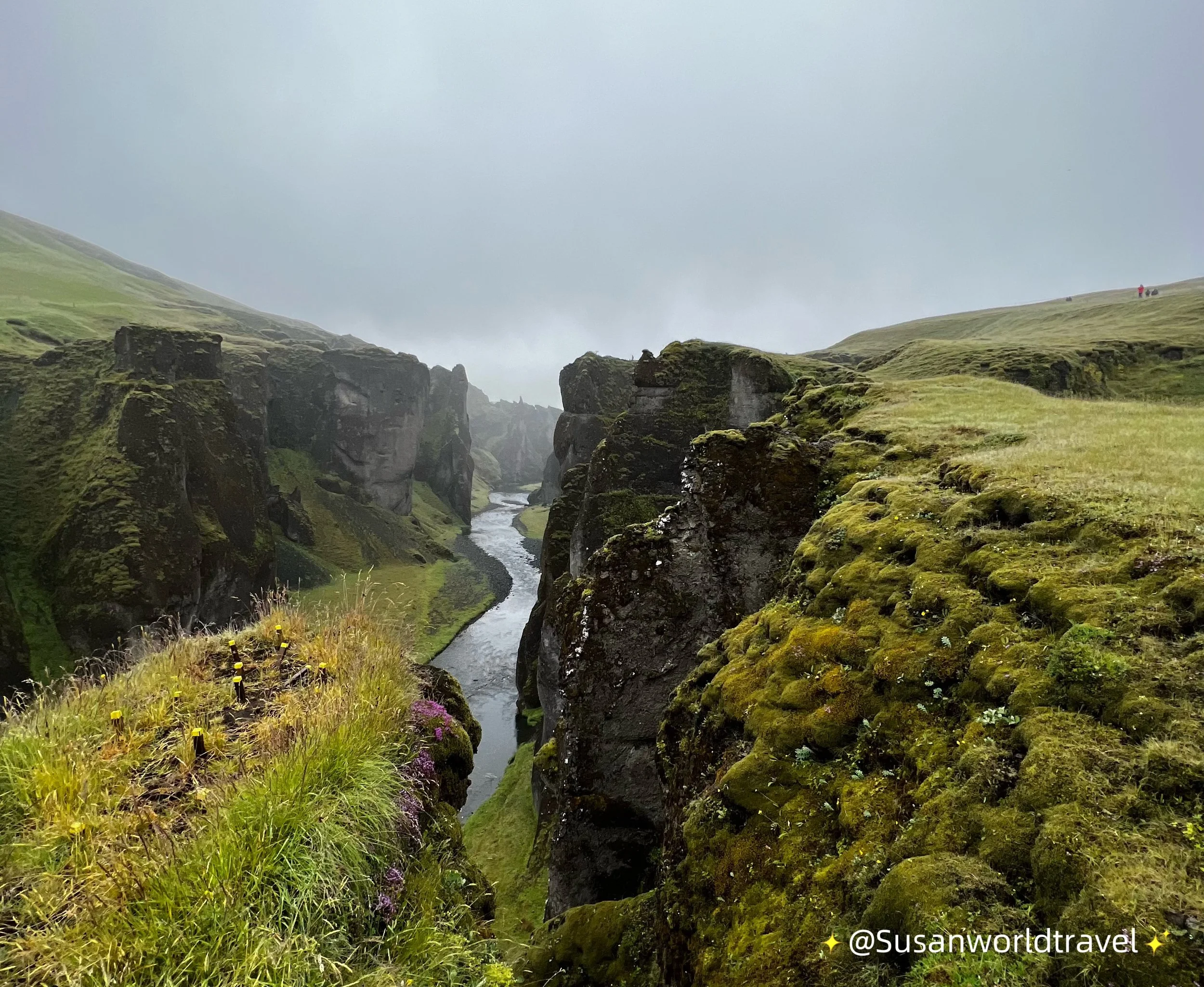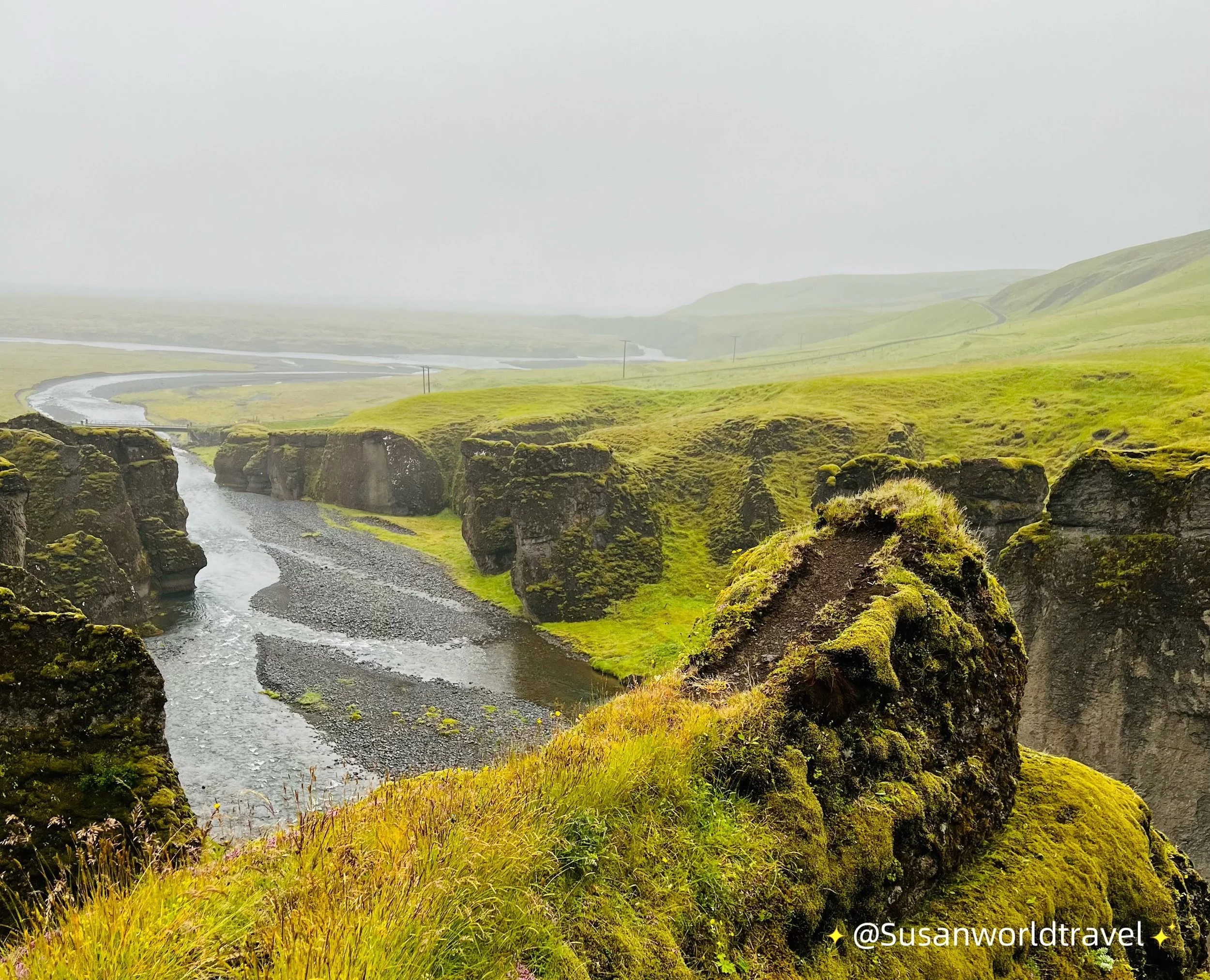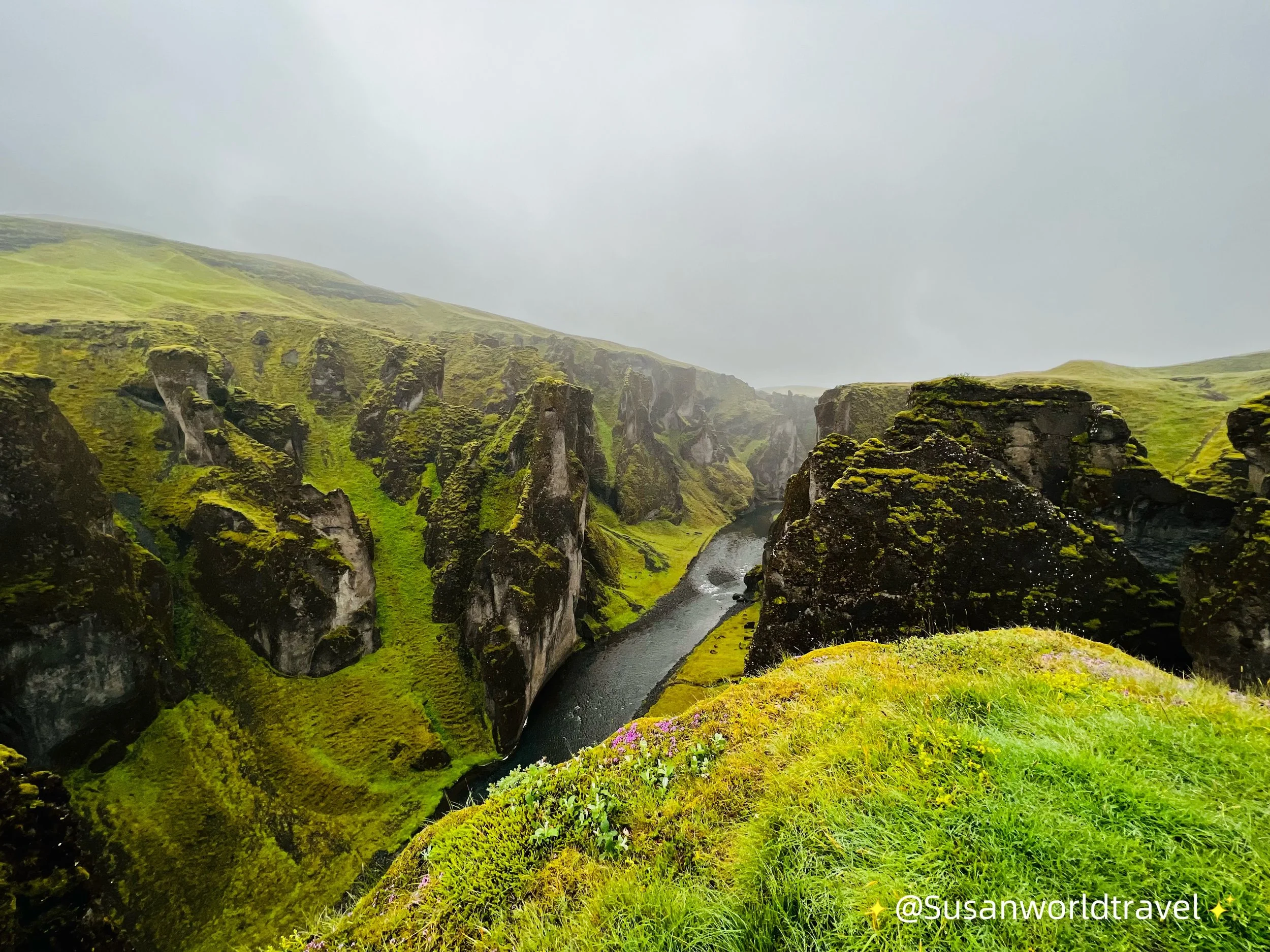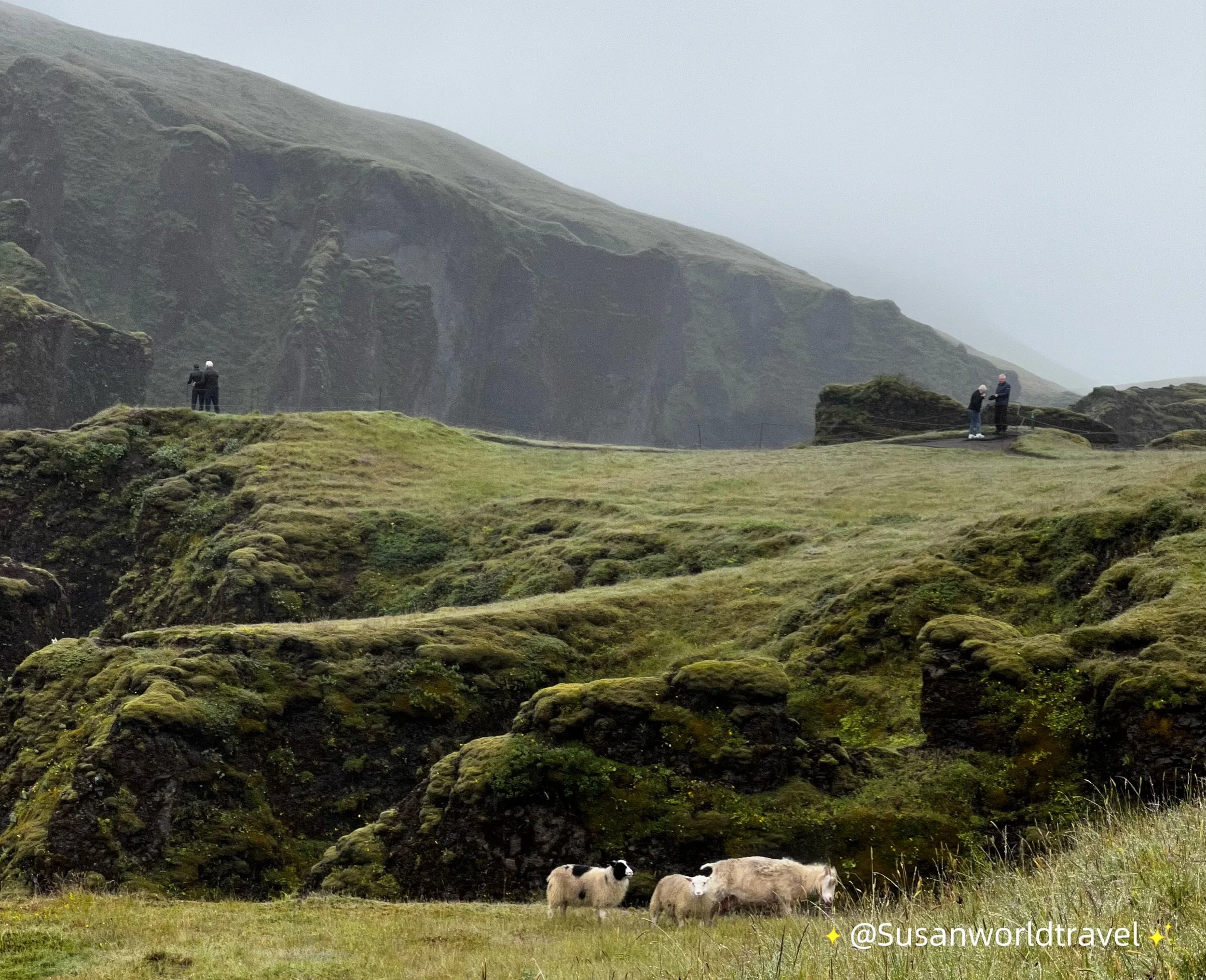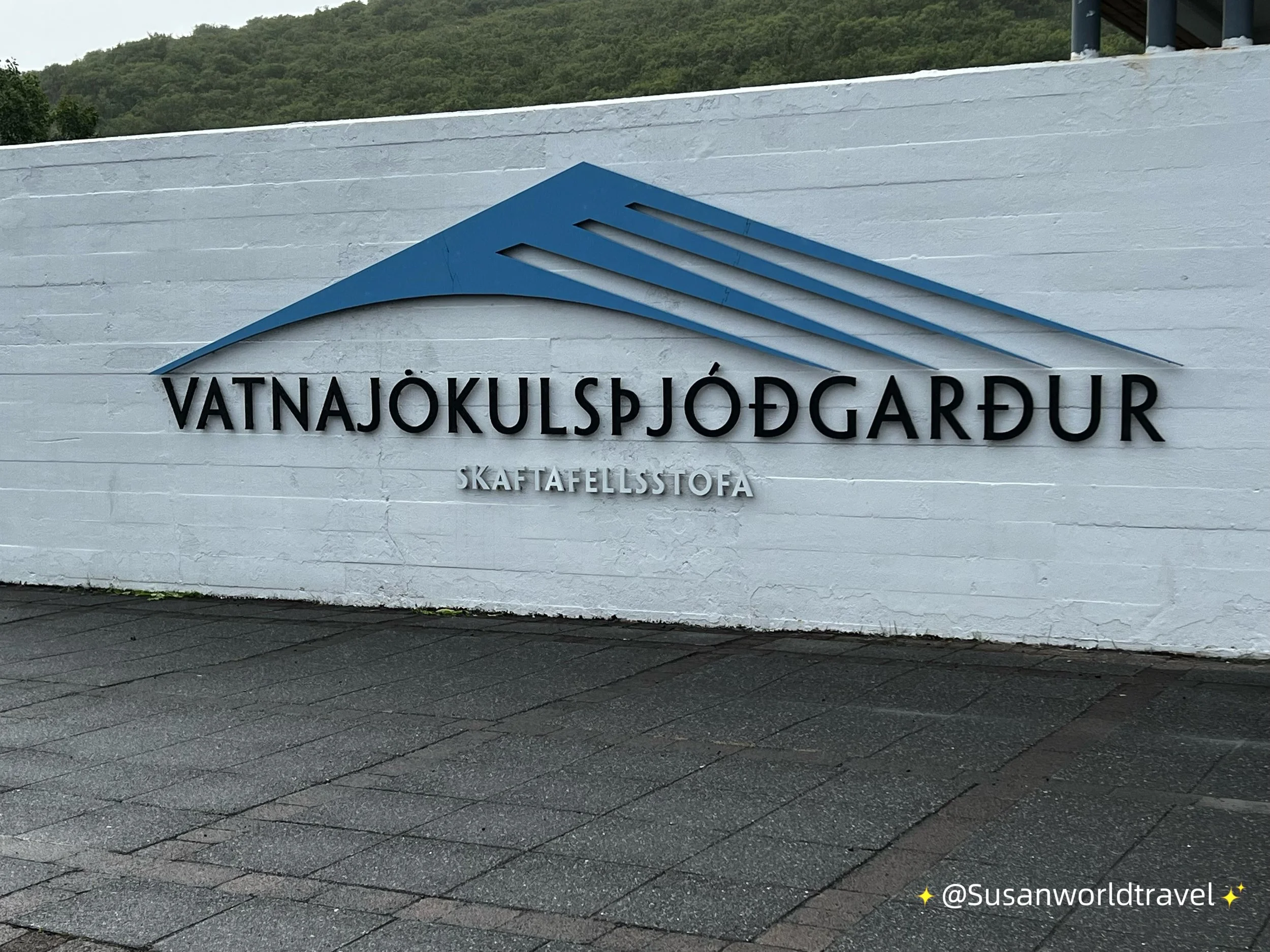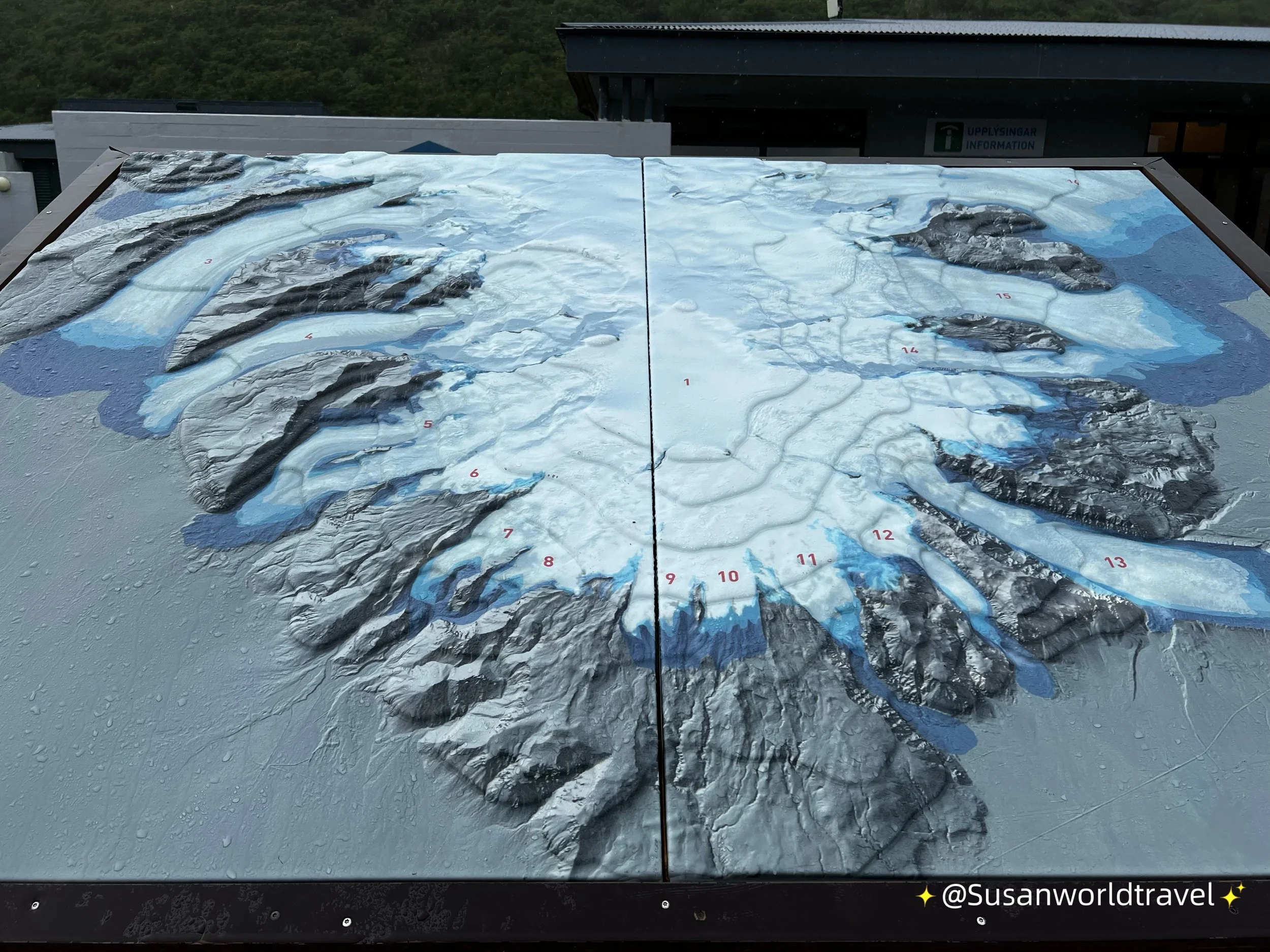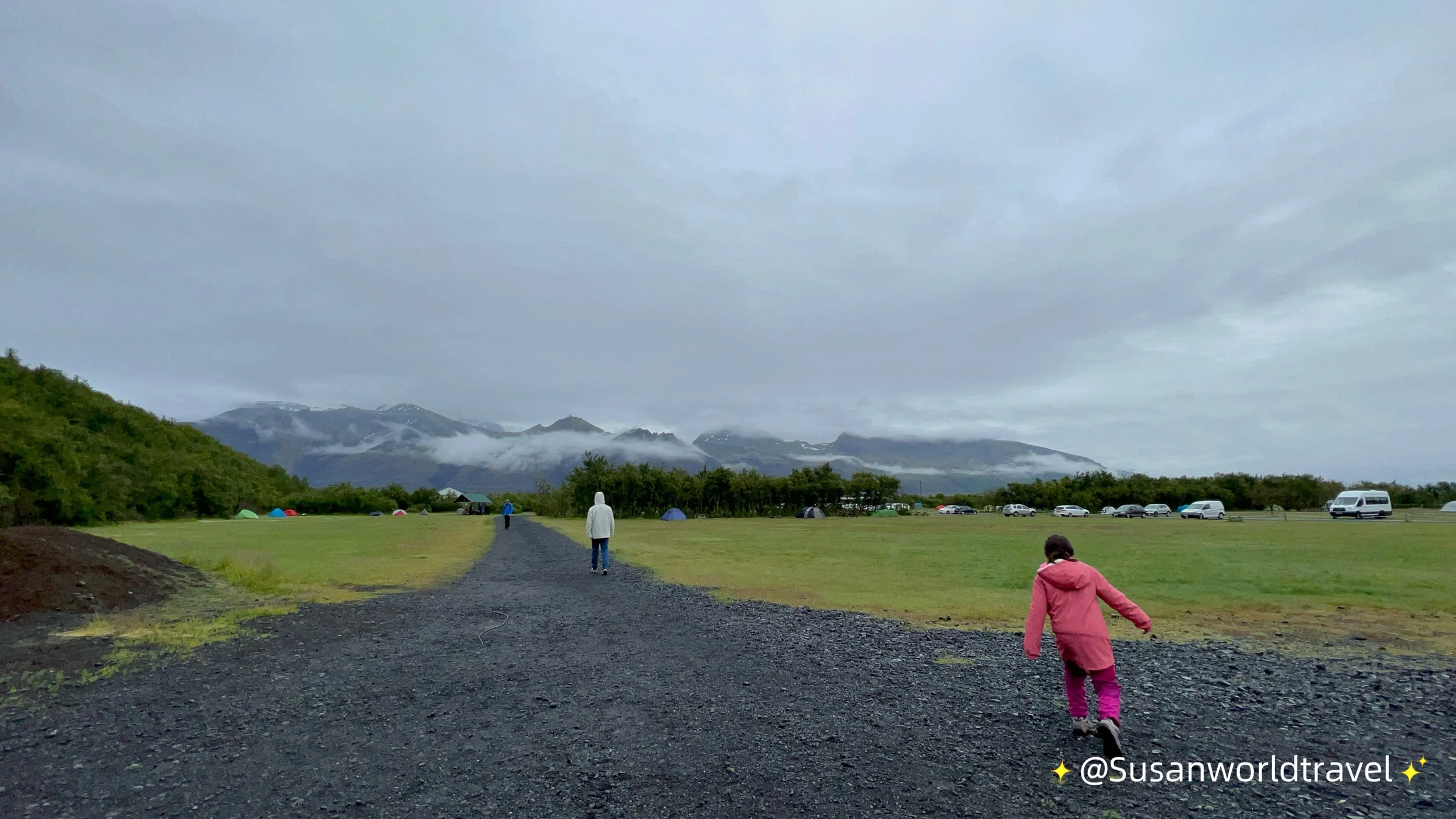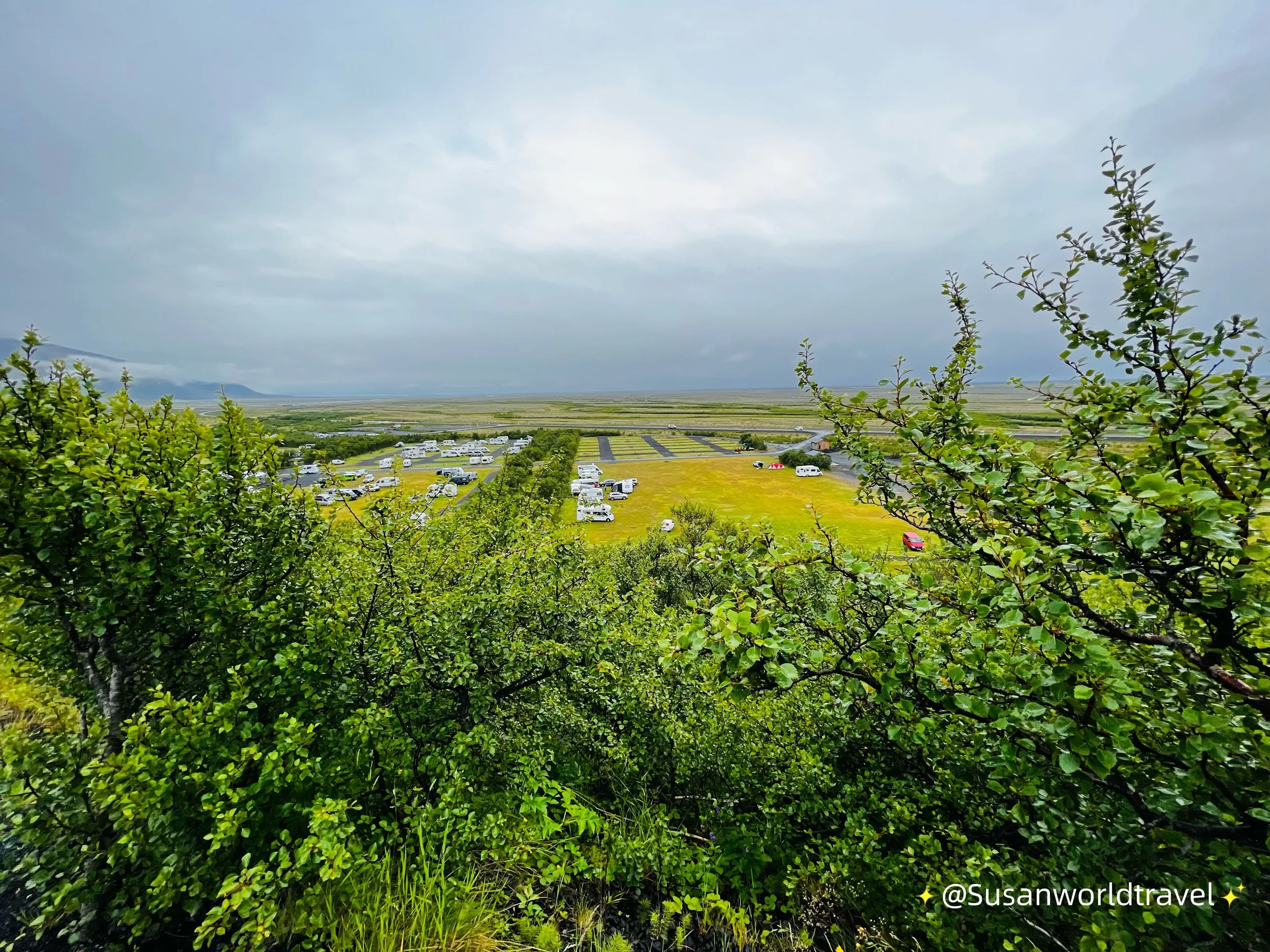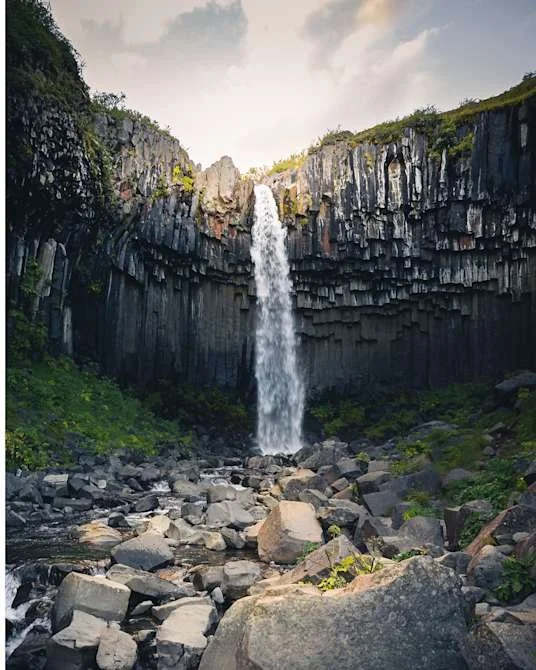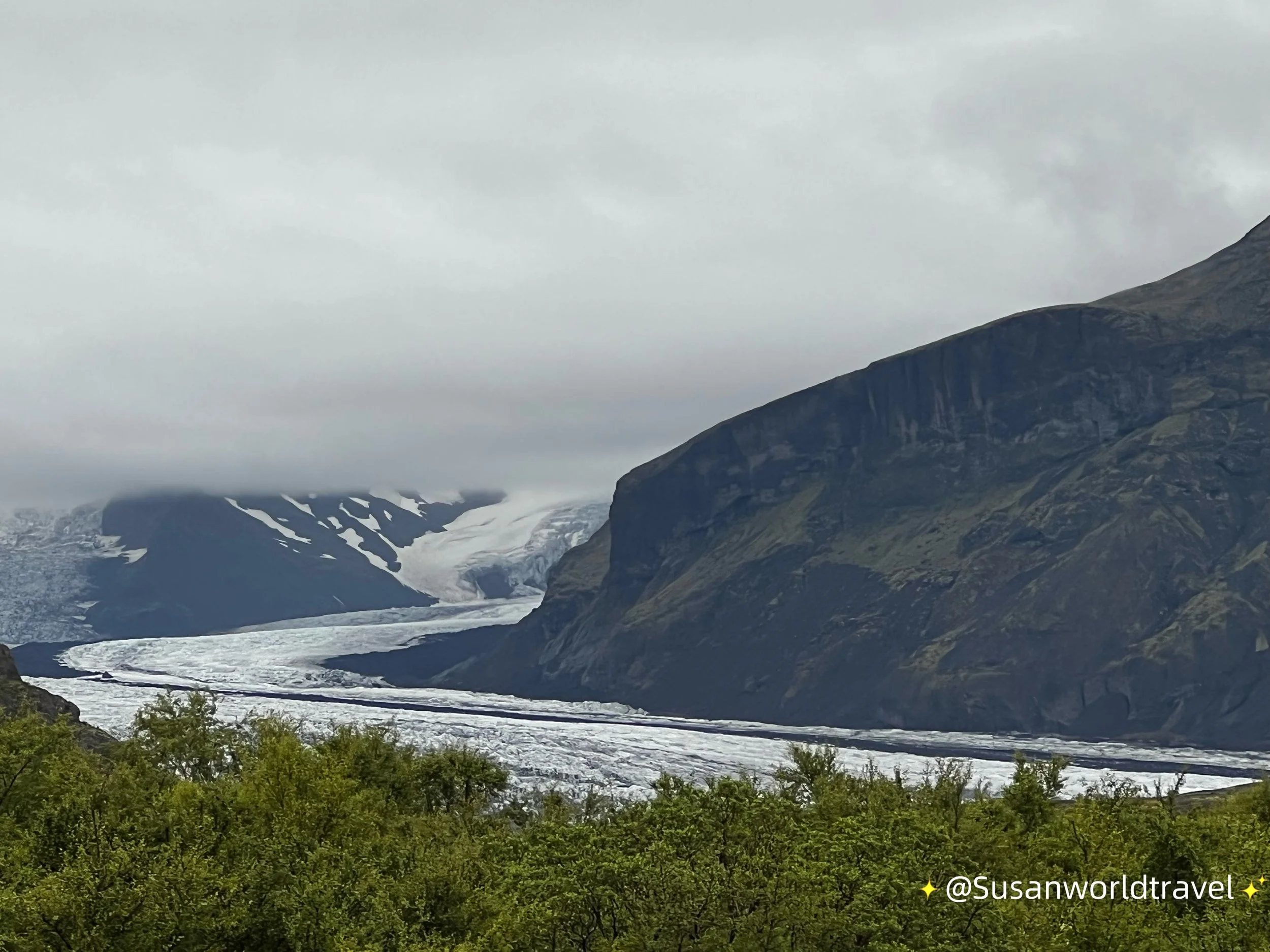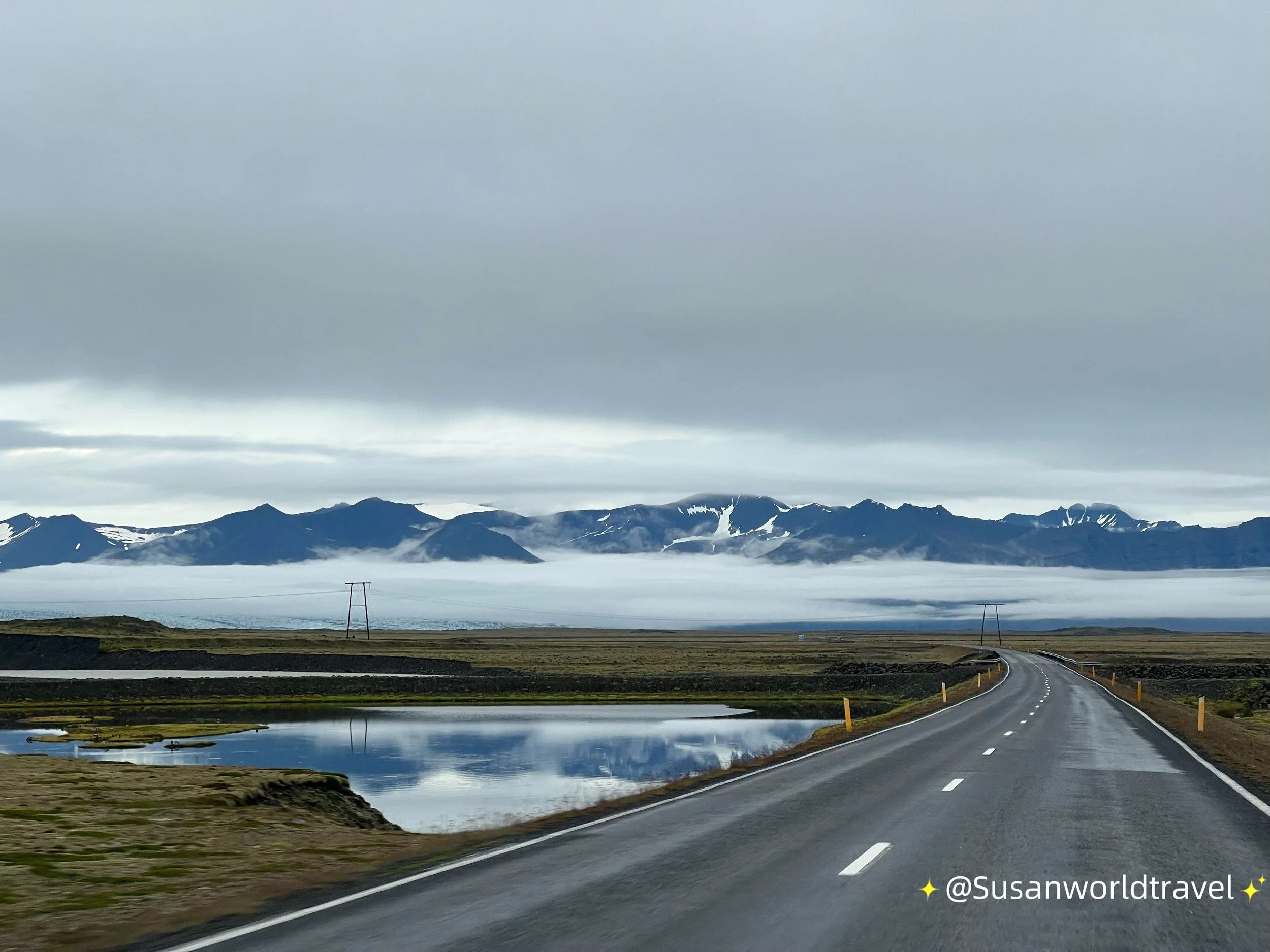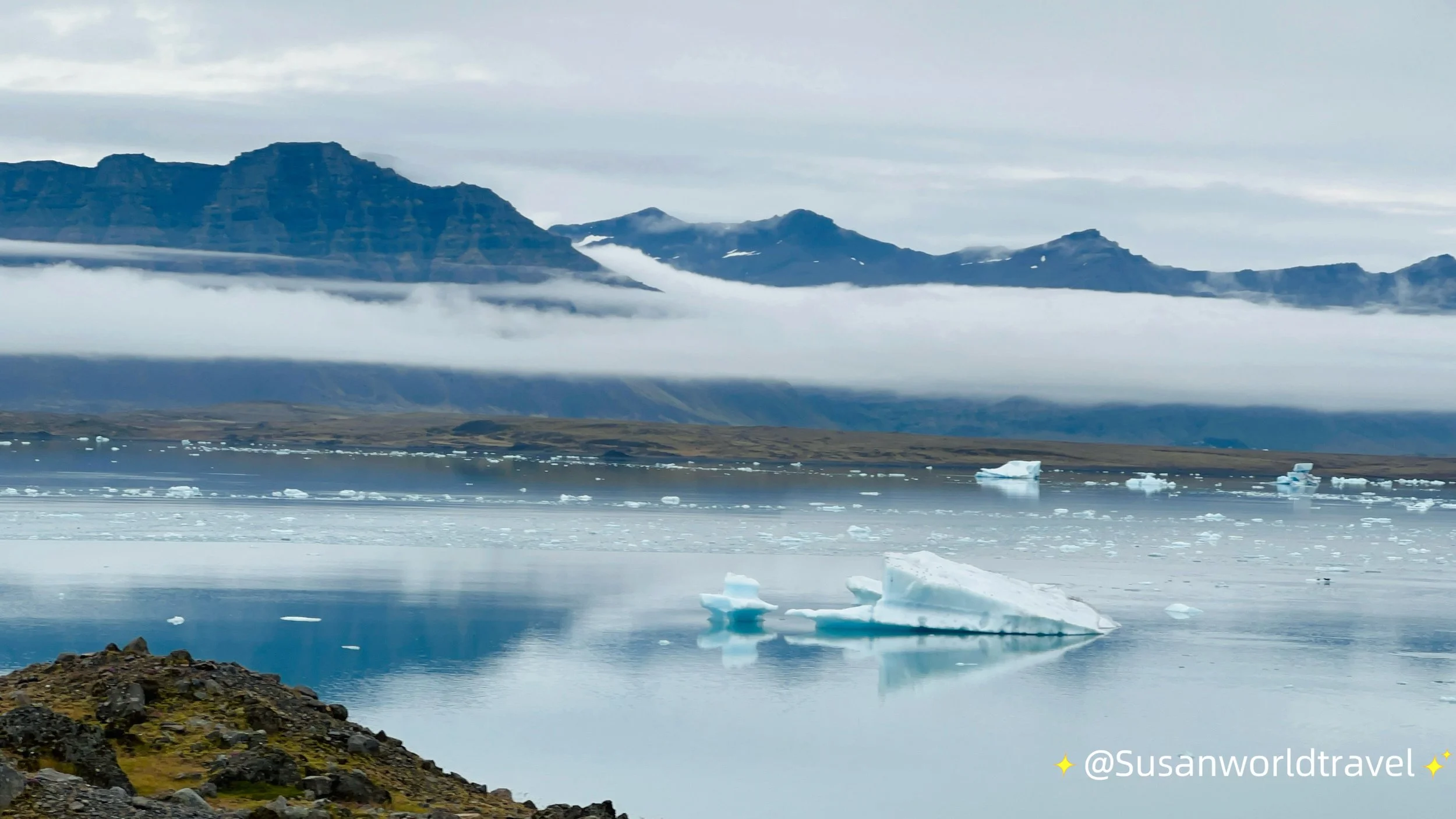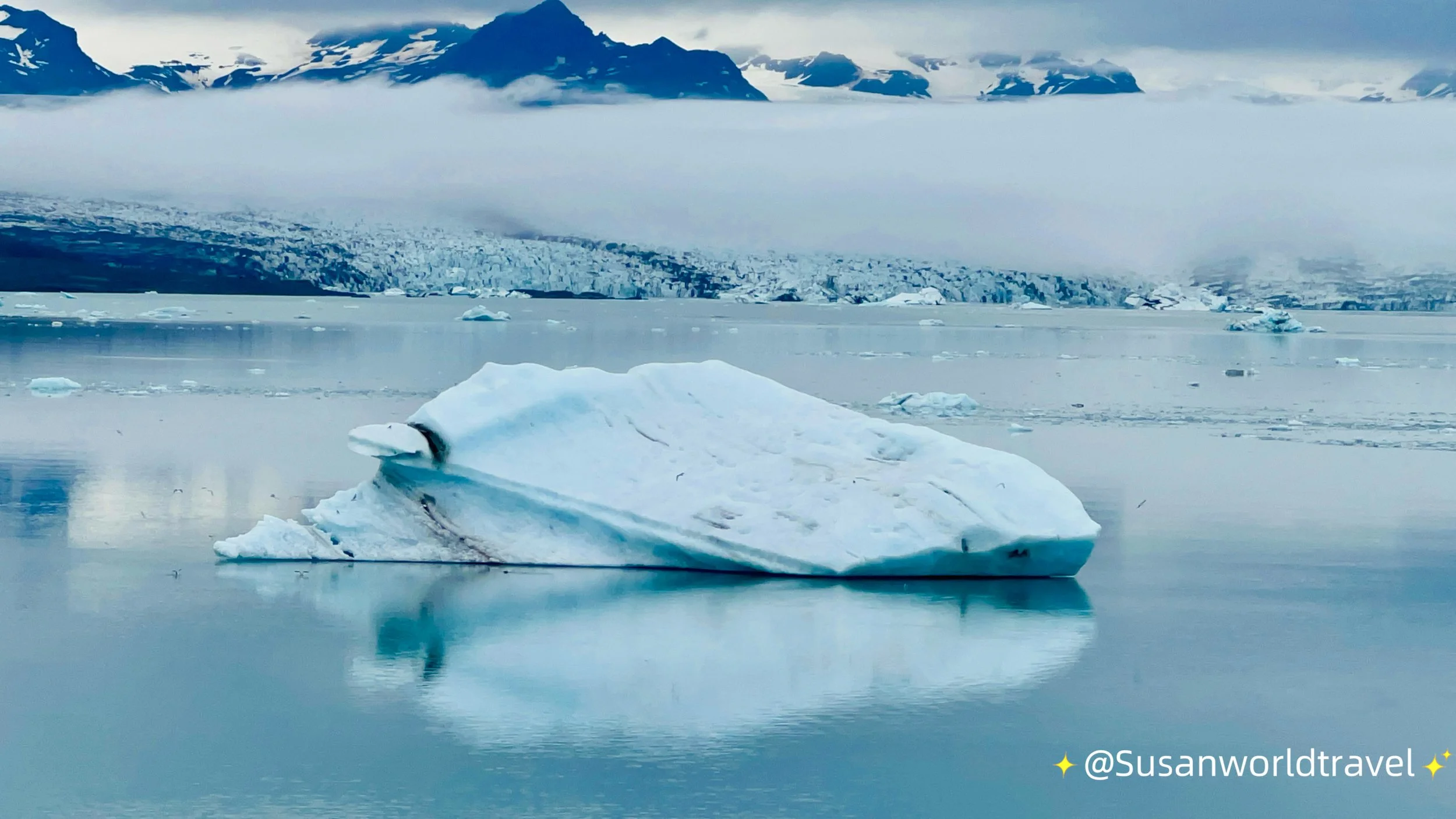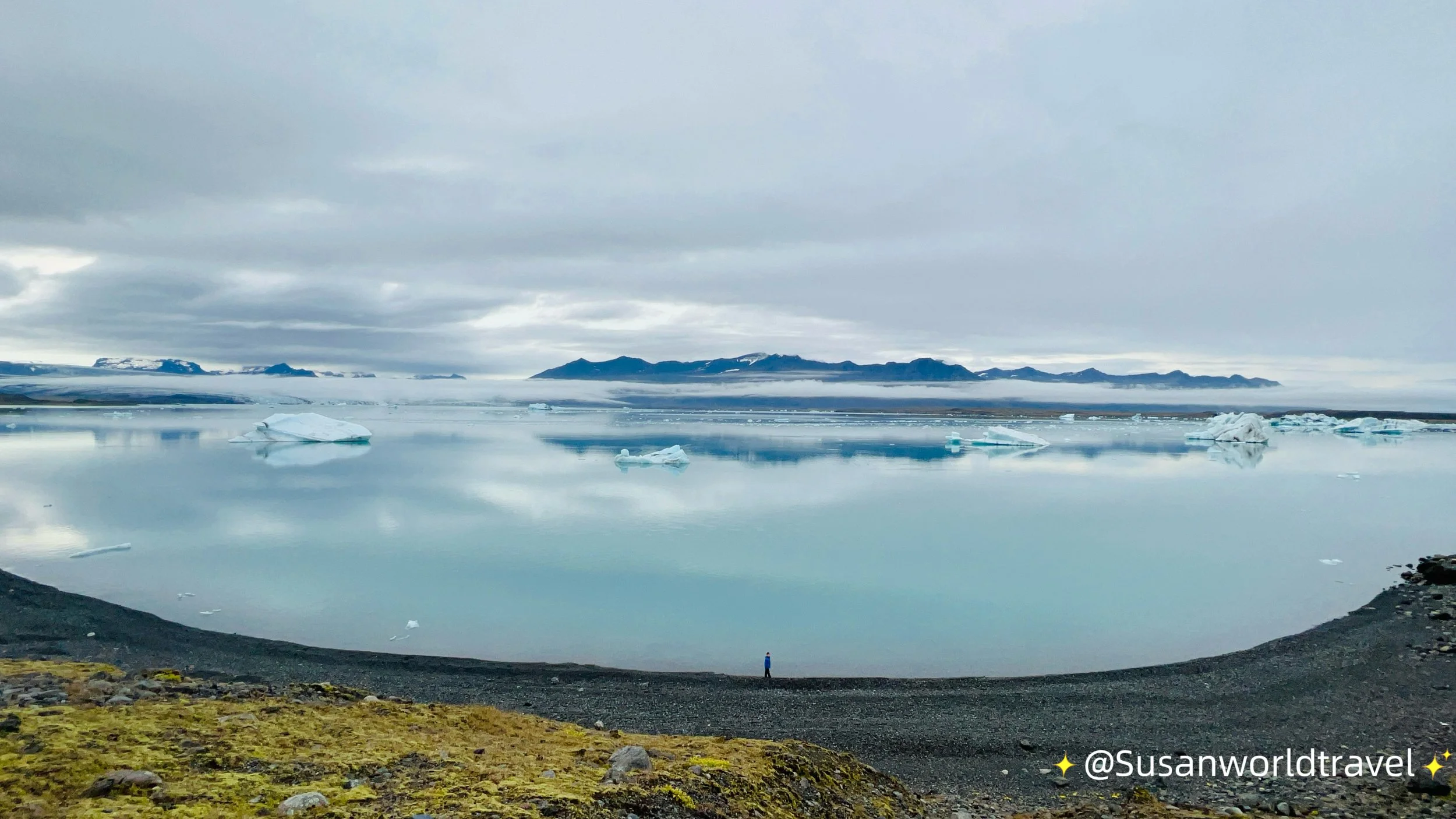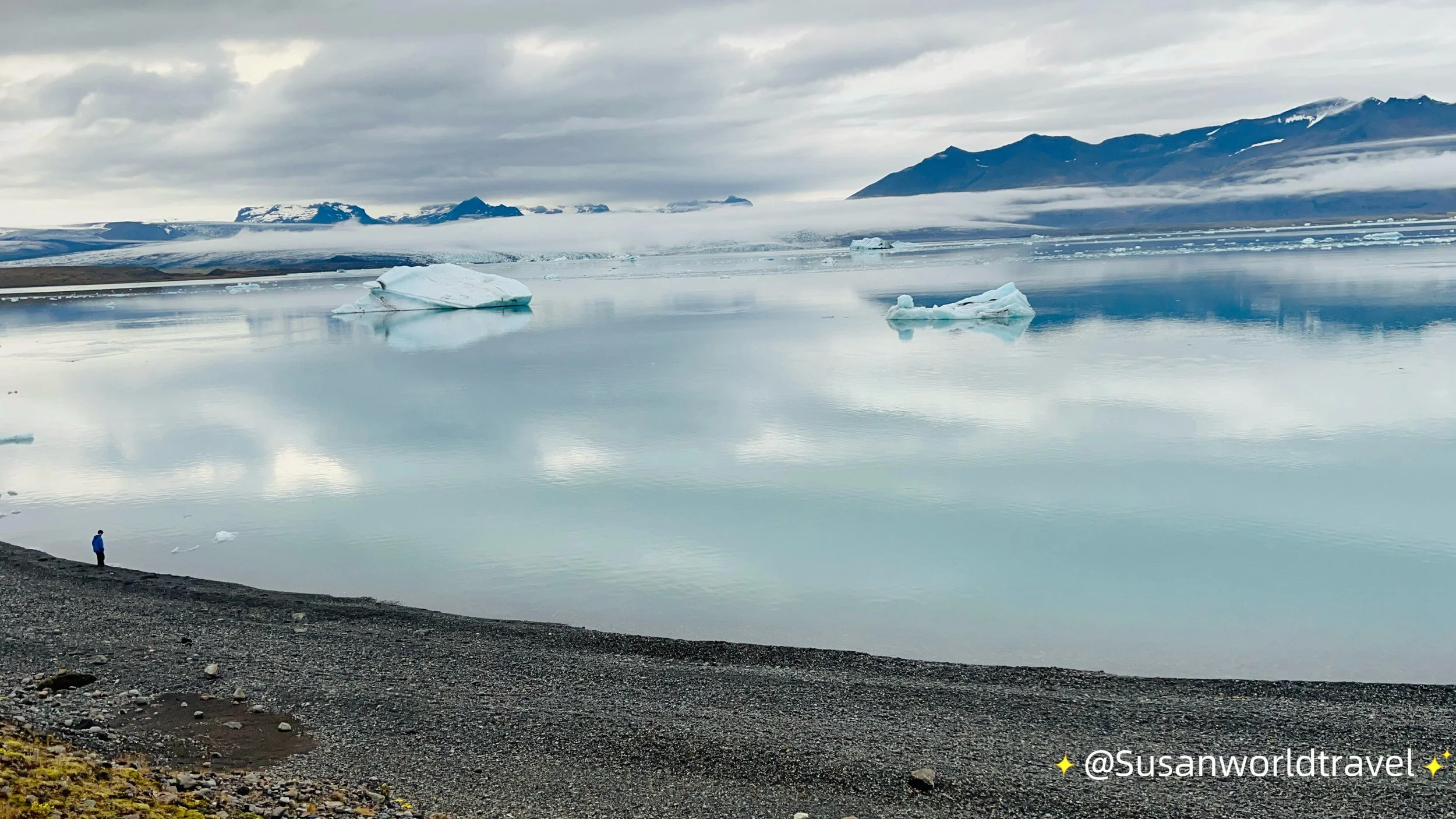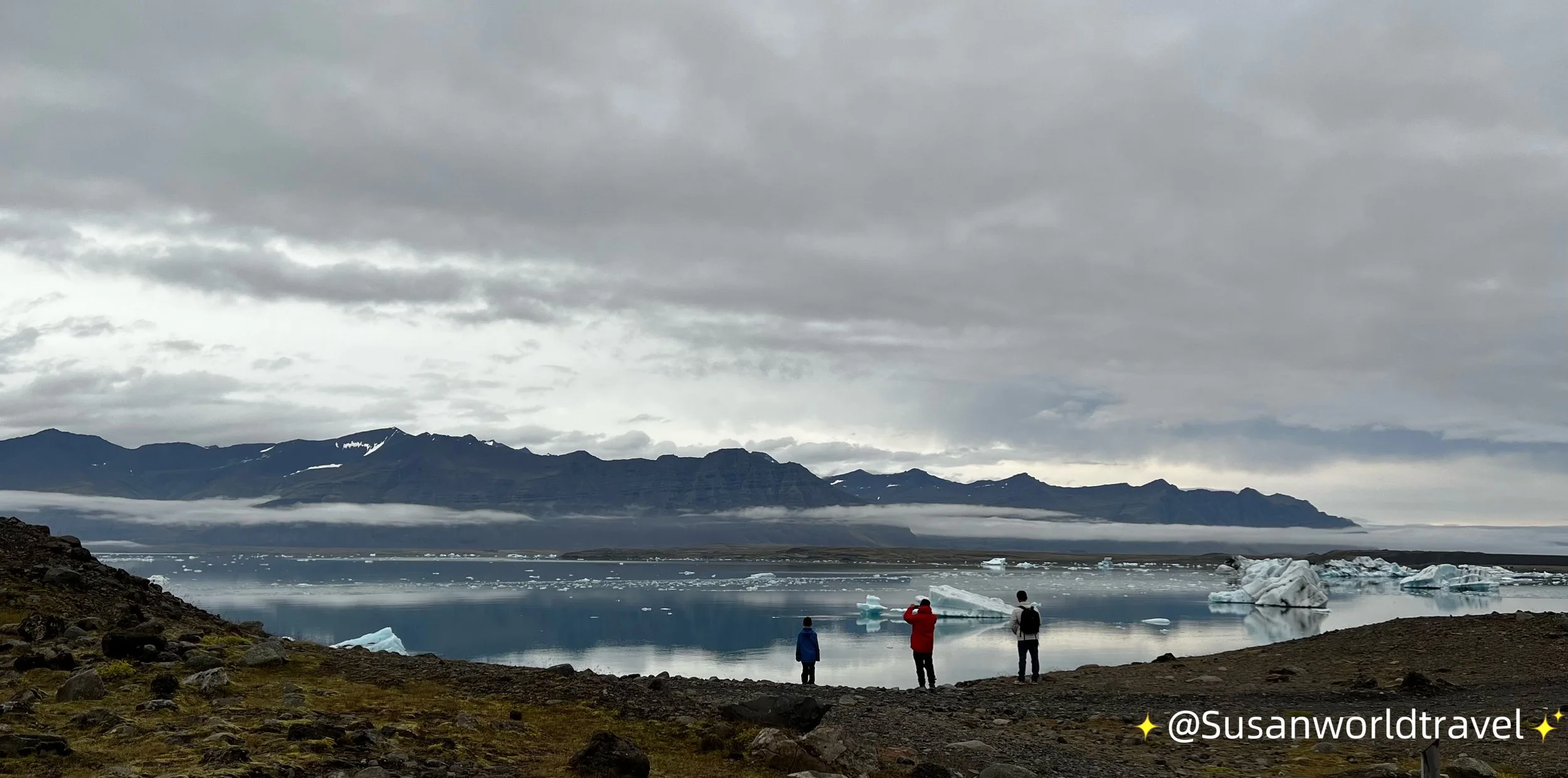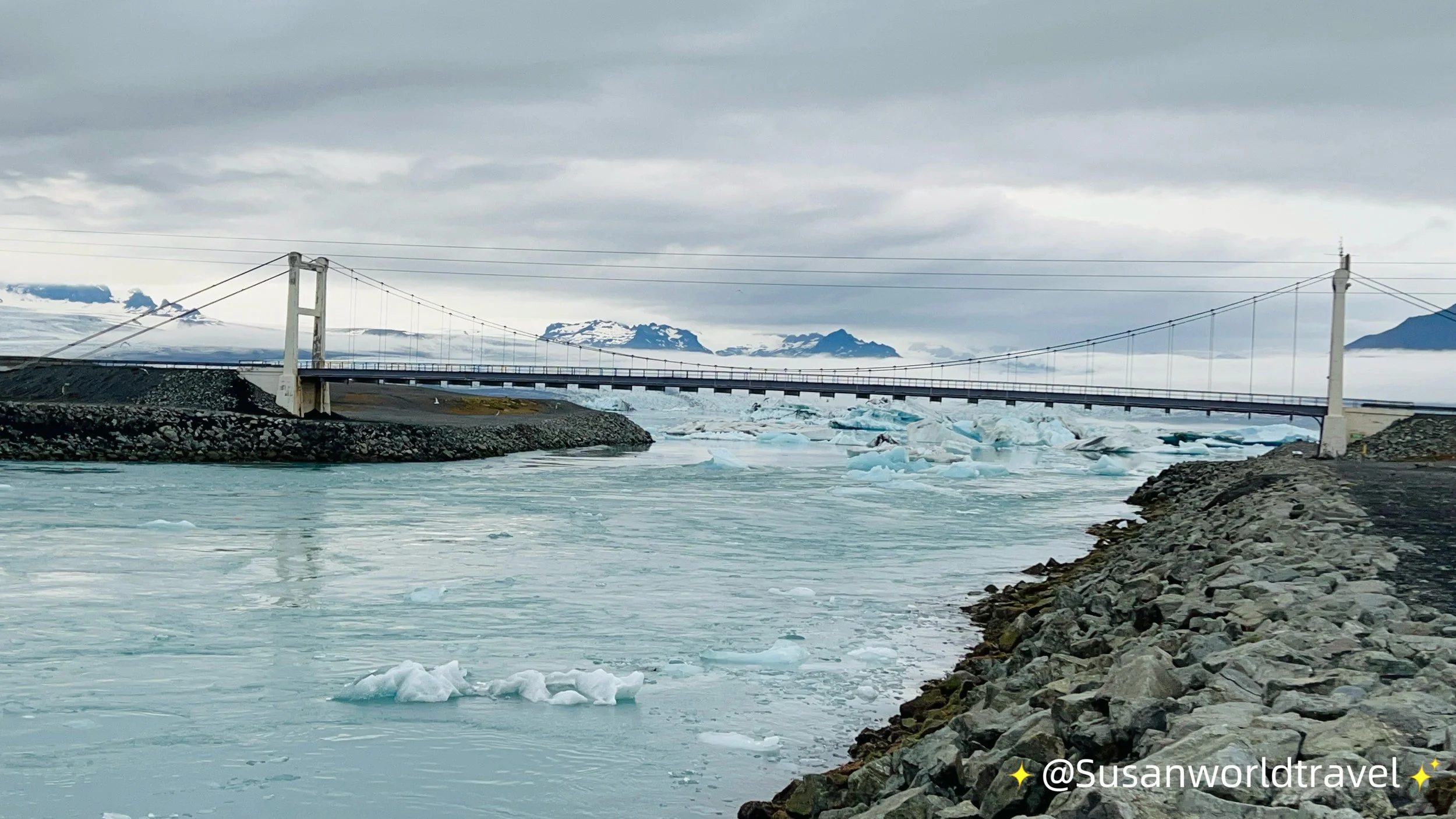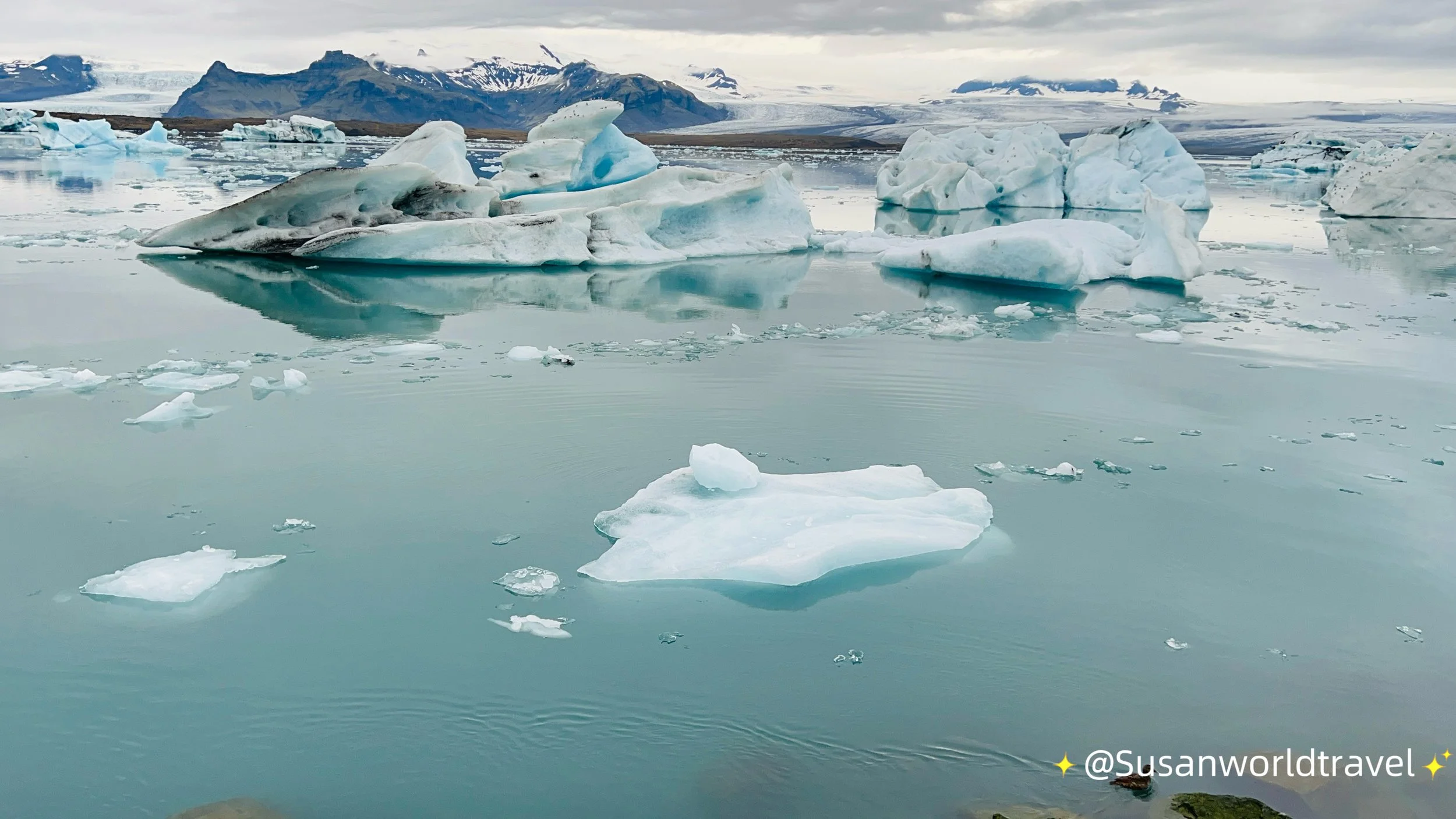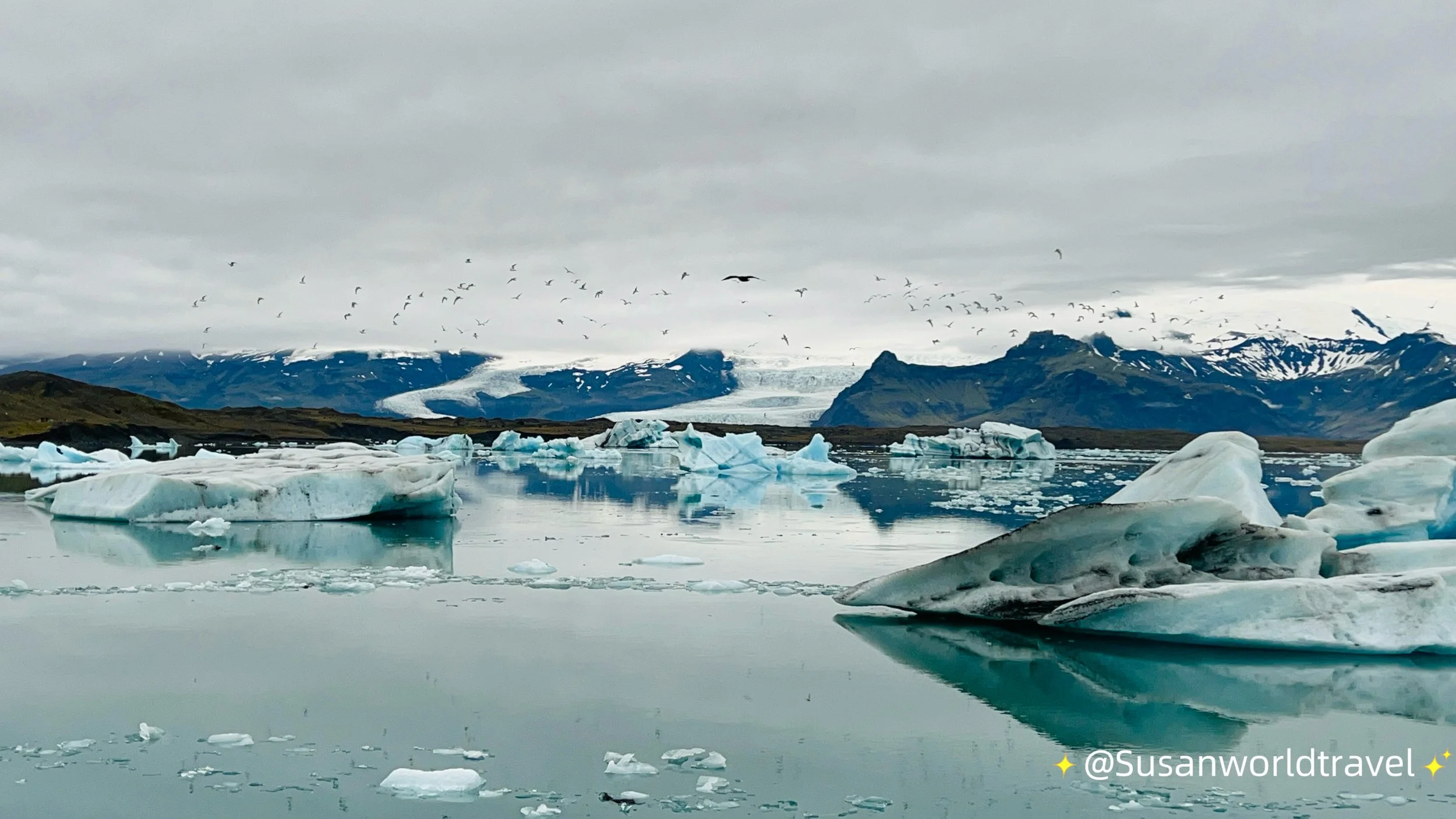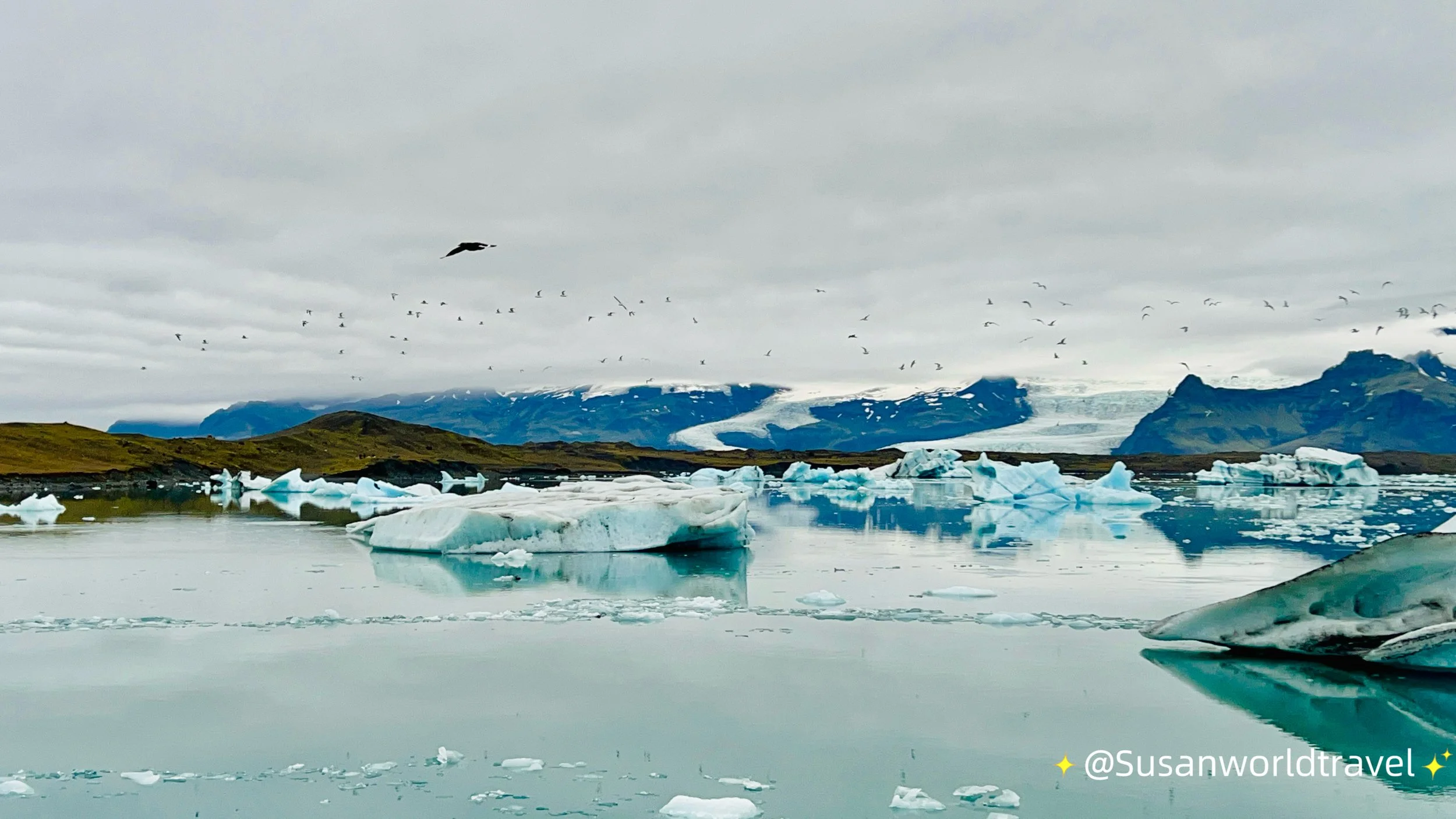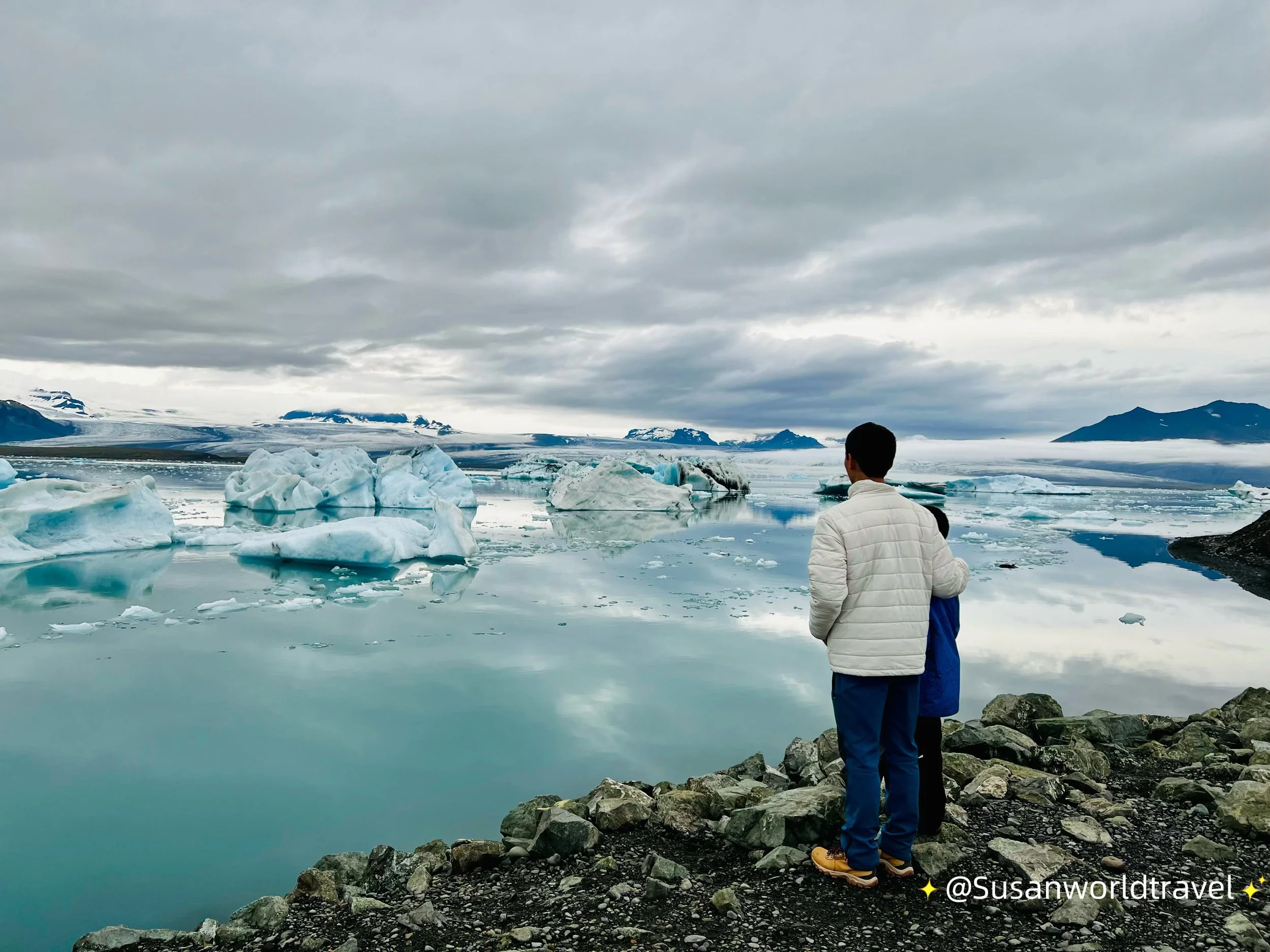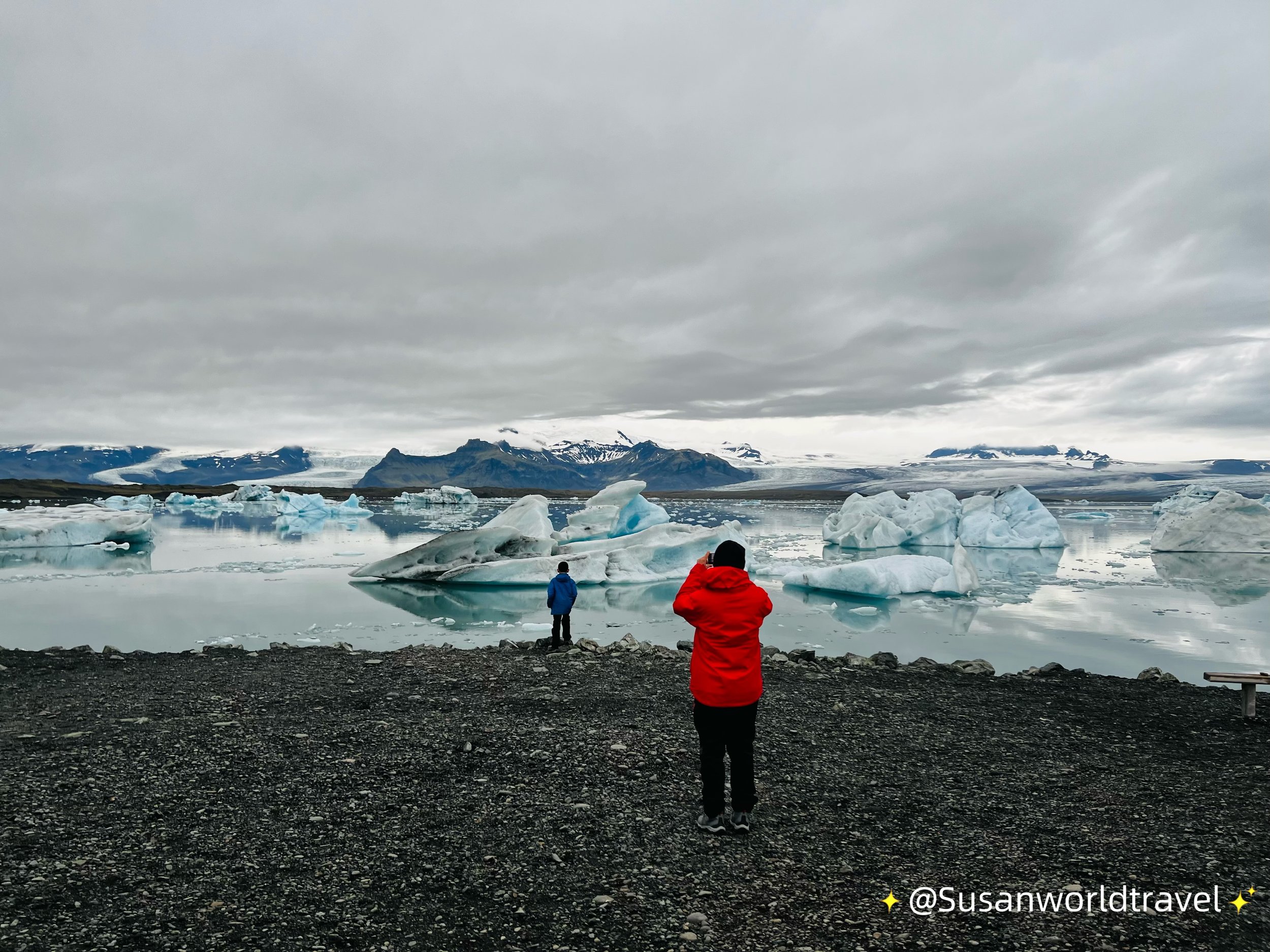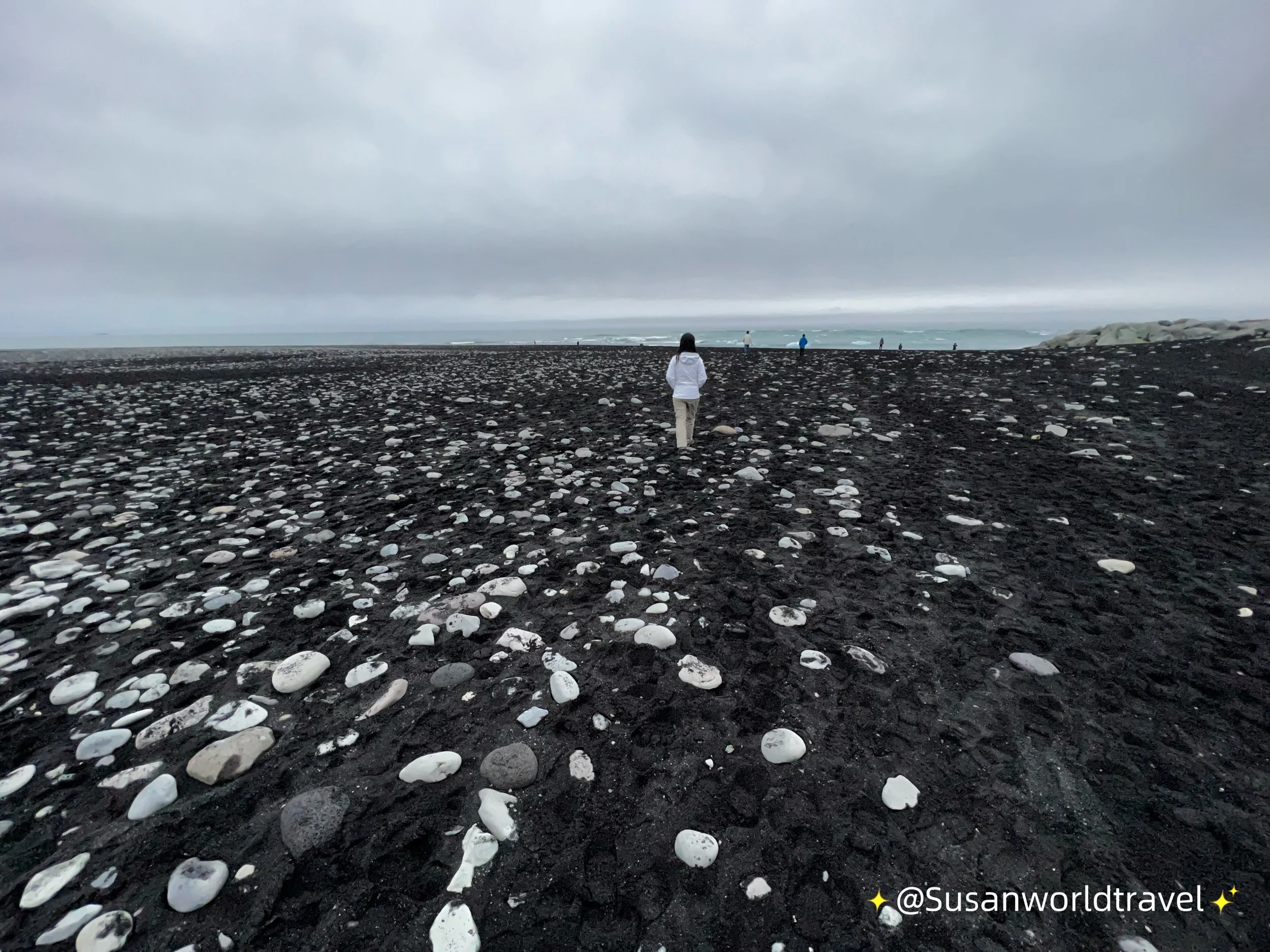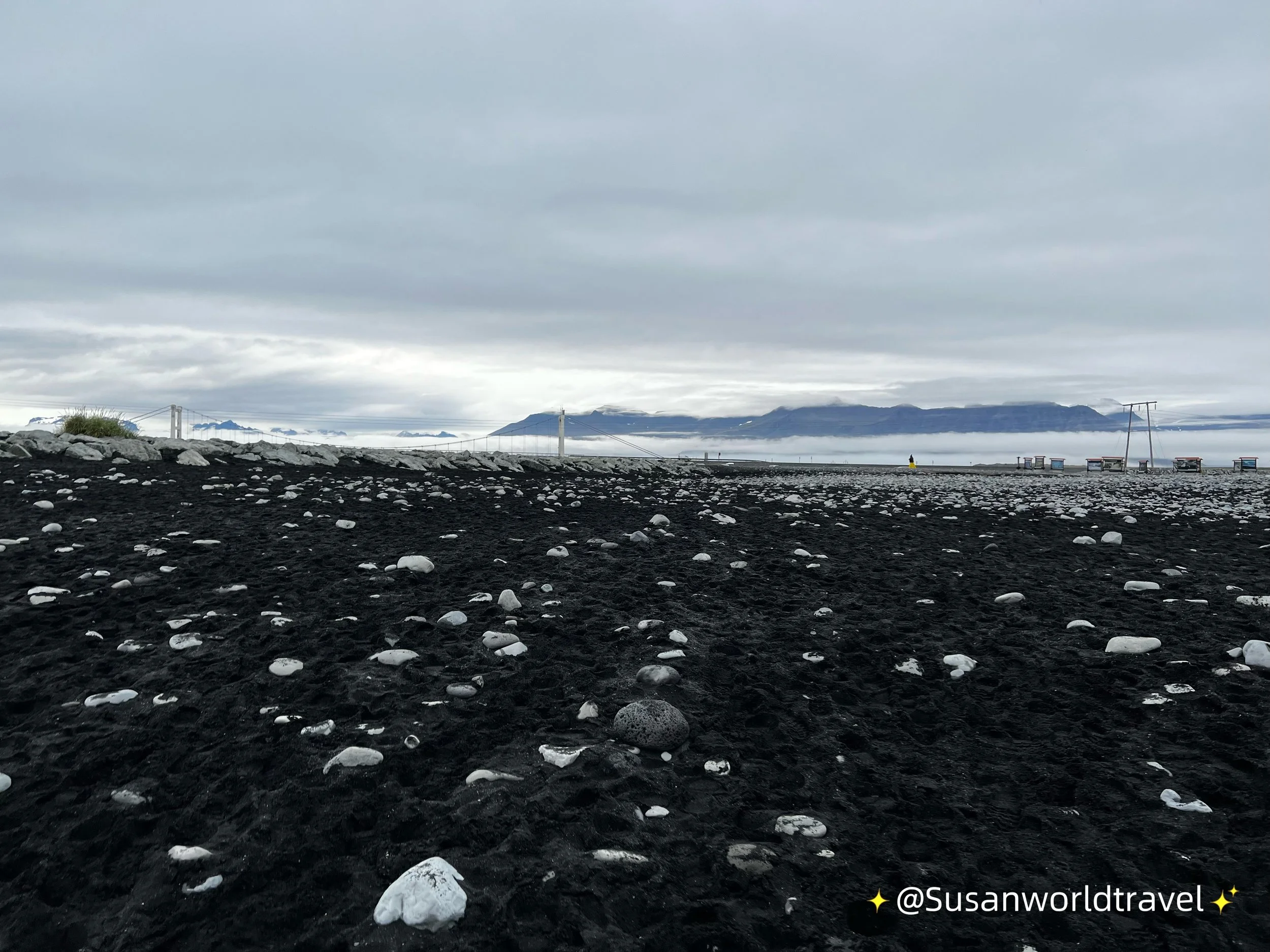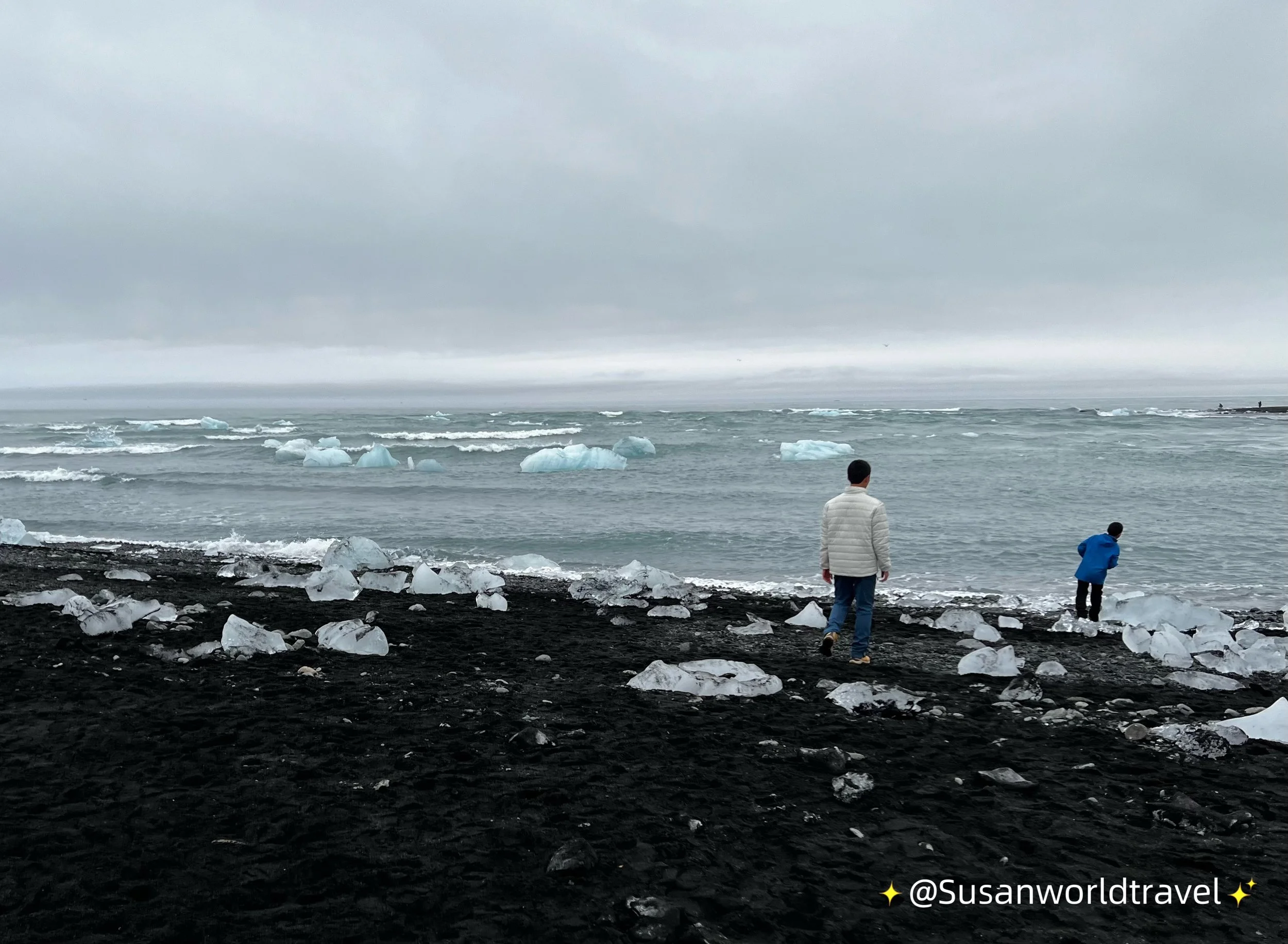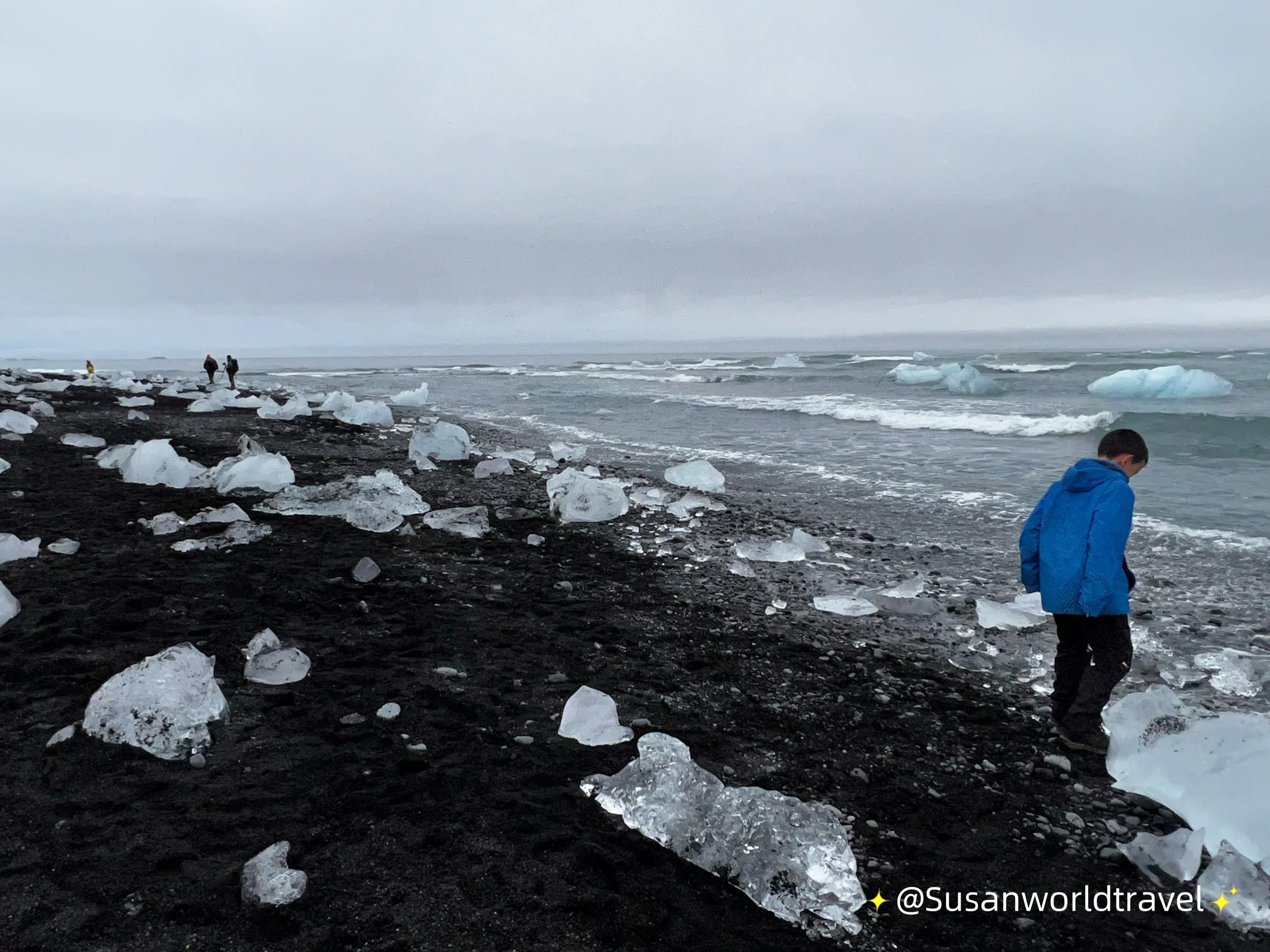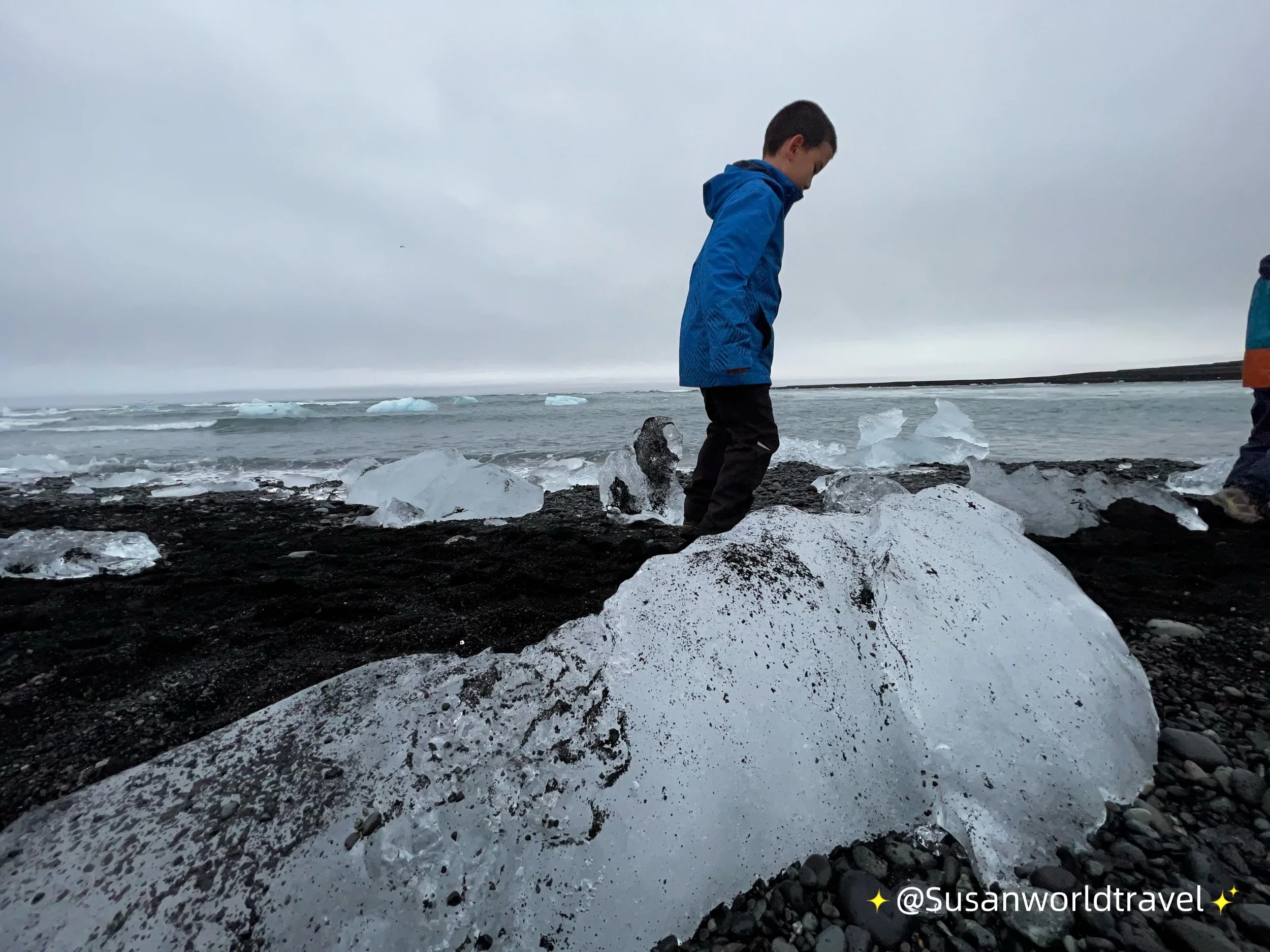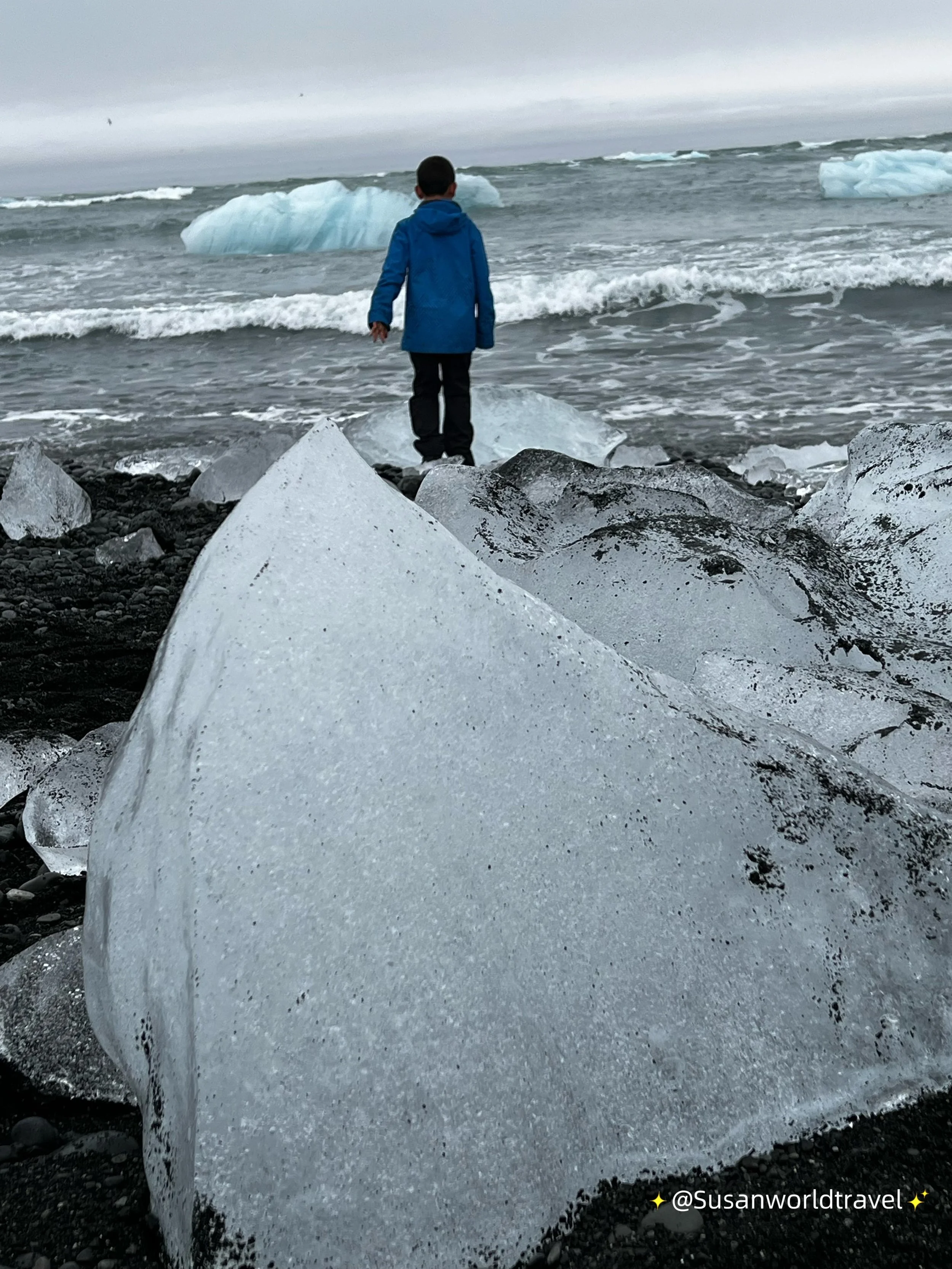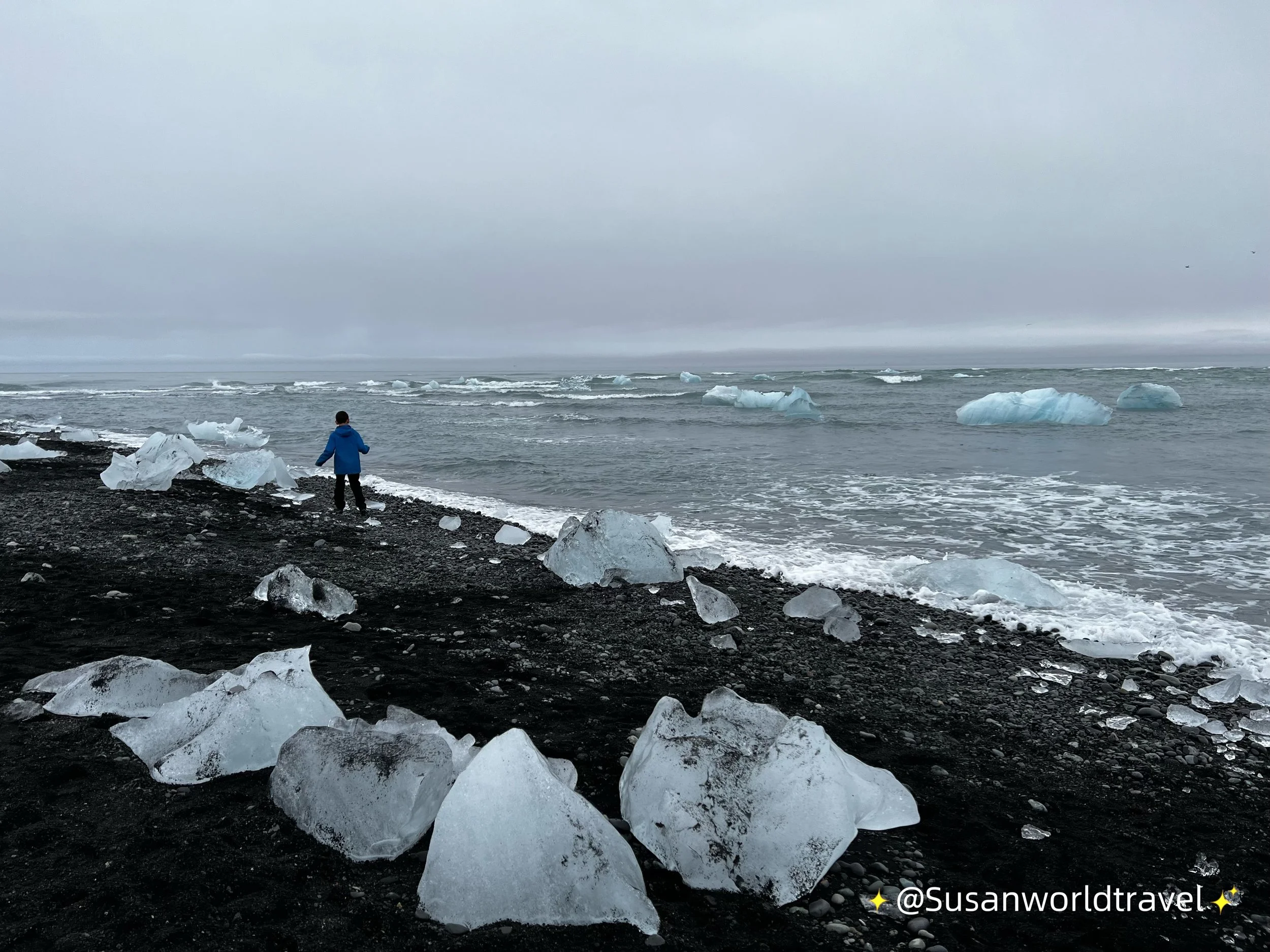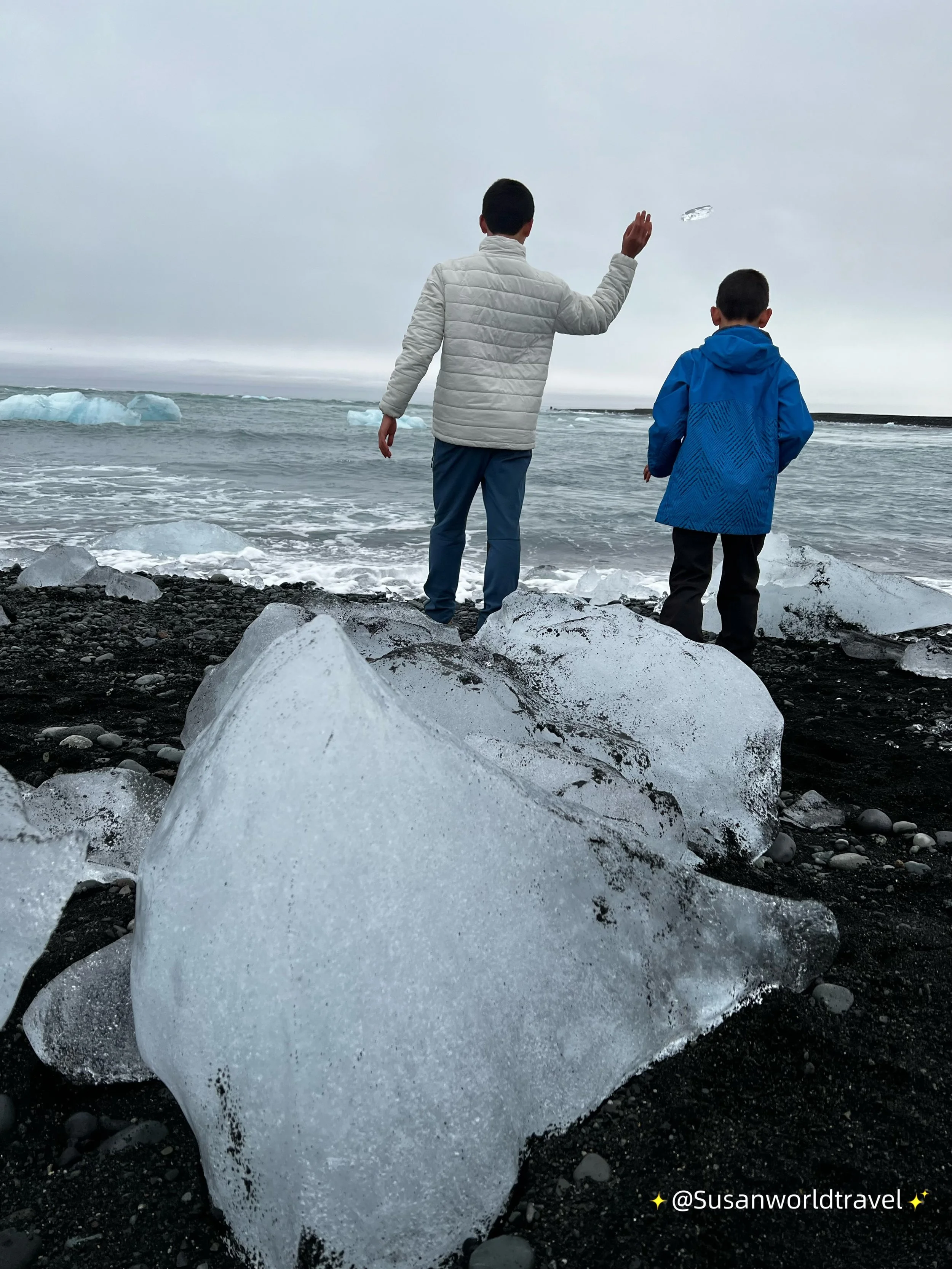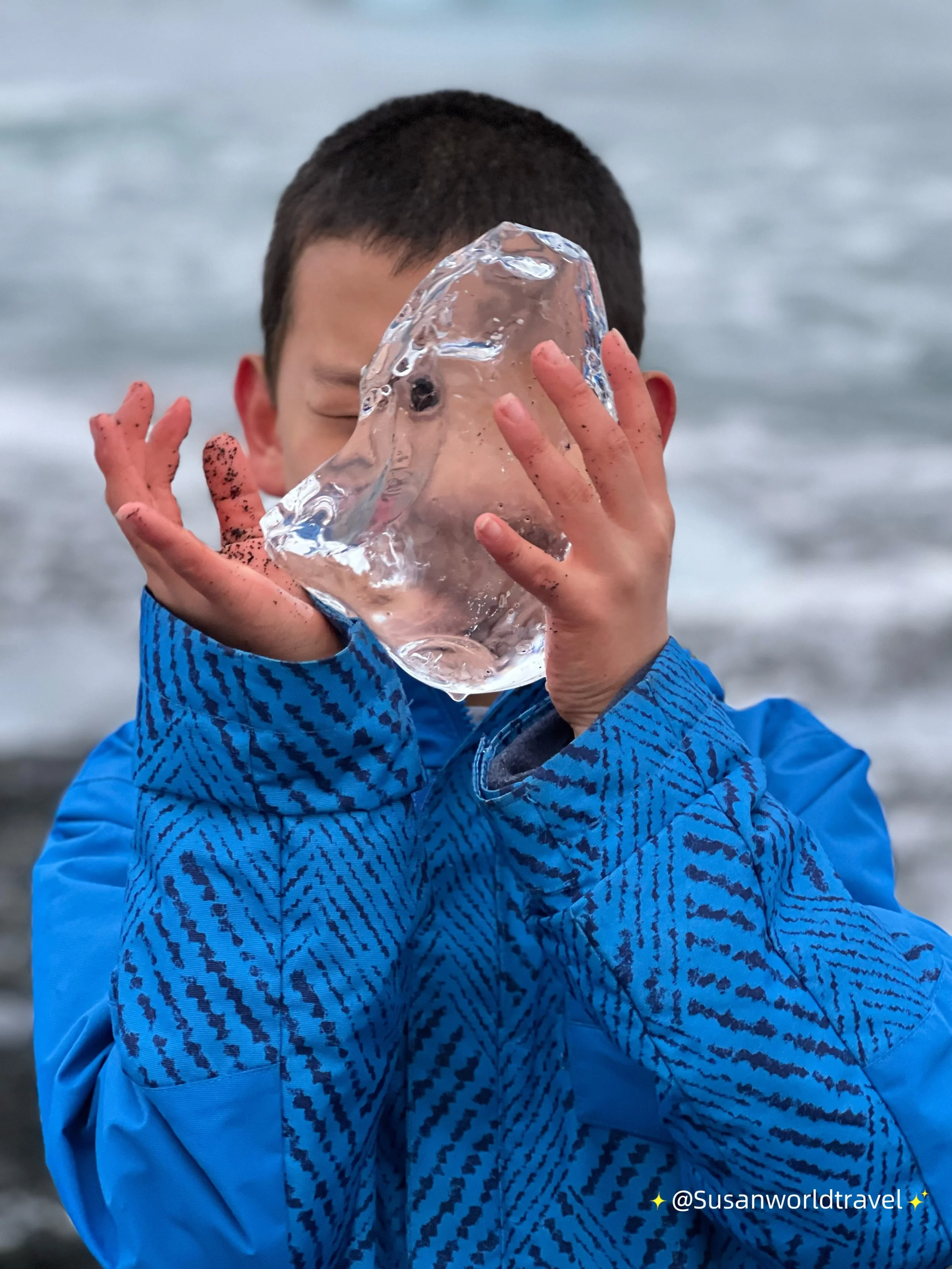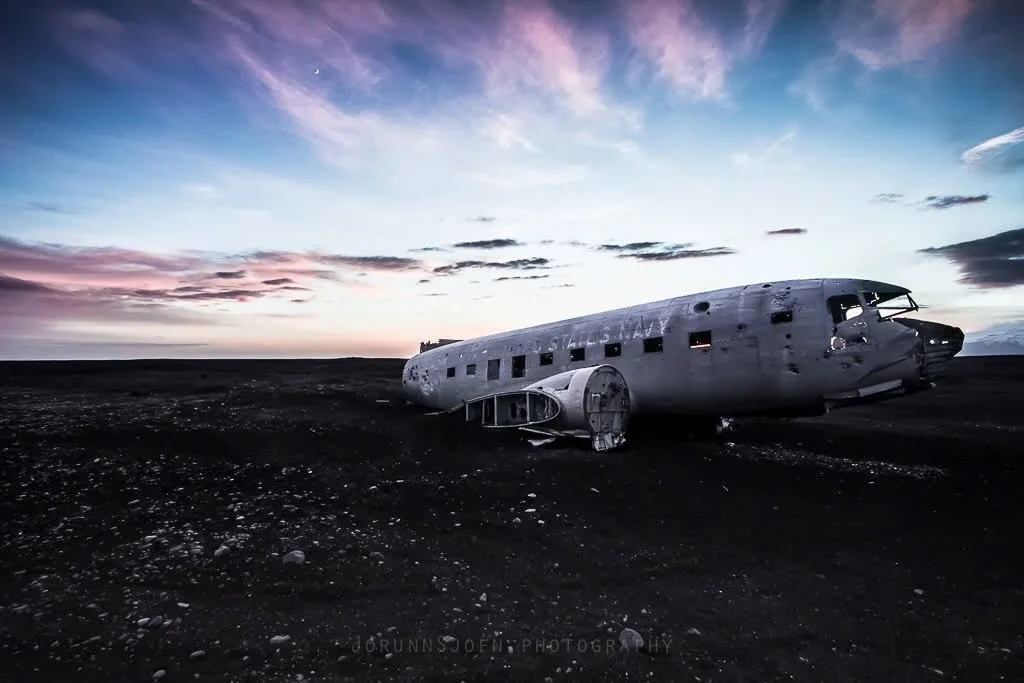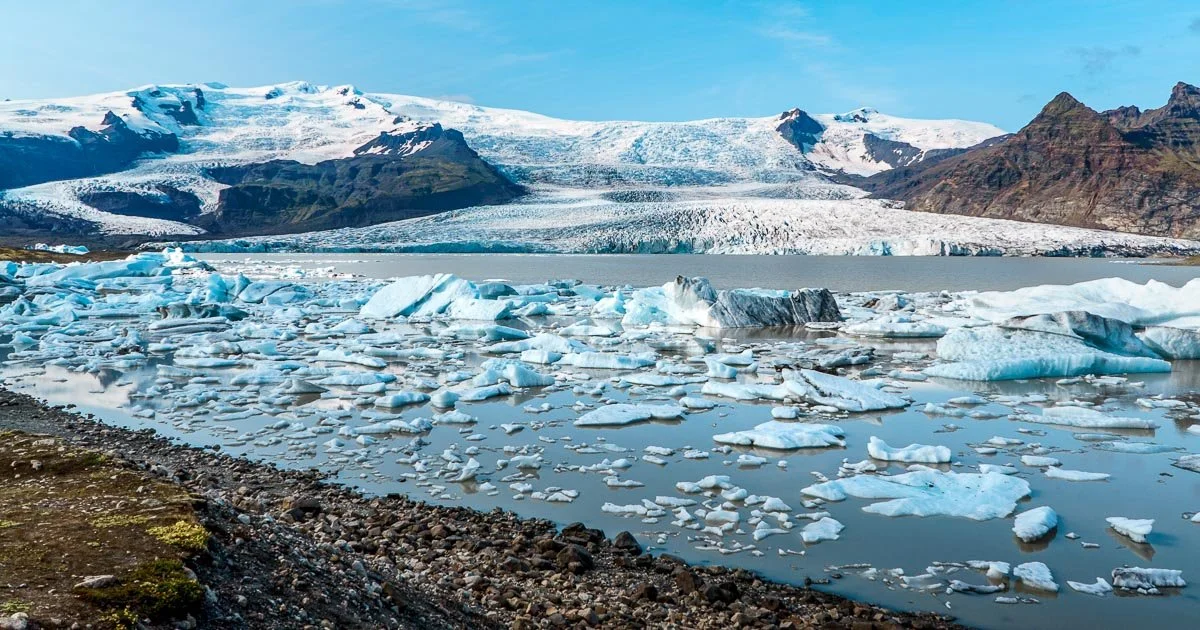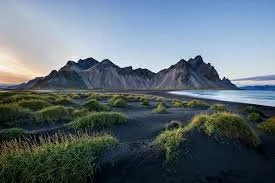Iceland Day 4
The ice cave has always been a place I've dreamed of visiting in Iceland. However, the blue ice cave is only accessible between October and March during the winter season. Luckily, there are year-round tours available for the black ice cave, lasting three hours and open to participants as young as six years old. This was our first destination for day 4.
After approximately forty-five minutes of riding in the super jeep, we reached the glacier. The guide provided helmets and crampons to attach to our shoes. The next hour involved a glacier hike, accompanied by a constant drizzle, requiring full waterproof gear from head to toe. Gloves were essential; even a brief exposure to the air left fingers numb. The hike to the cave turned out so breathtaking. This journey felt like stepping into an unfolding scroll of enchanting ink wash paintings. The ash-covered mountains resembled ink, the glacier akin to flowing water, creating a mesmerizing contrast of ink and water. The somber sky added to the ethereal ambiance, rendering the scene timeless, where only black and white remained, allowing the enchantment of the surreal landscape to overshadow the hardships endured along the way. It was crucial to follow the guide's path; I made the mistake of veering off track, resulting in one foot plunging into a small water hole, soaking my leg up to the calf. Thanks to the painful lesson learned at Gullfoss, I wore waterproof socks this time, preventing excessive wetness.
Before entering the ice cave, there was a section where we needed to climb up using ropes. Because Mýrdalsjökull glacier is covered by Katla's volcanic ash, which isolates the ice cave from direct contact with the air, the ice cave may only shrink but not completely disappear or melt during the summer. The air inside the ice cave is crisp and cool, with the temperature often hovering around freezing or slightly below. You might feel a chill in the air, so it's essential to dress warmly in layers to stay comfortable during the tour. As we walked deeper into the cave, the translucent black ice formations surrounding us created a surreal atmosphere. The play of light and shadow on the ice walls can be mesmerizing,
Visiting the Katla Ice Cave in Iceland was definitely my top experience. You can book the cave tour here.
The trip concluded, and the super jeep brought us back to the meeting point, Ice Cave Bistro. Pleasantly surprised, we found it to be the most efficient option. The food was precooked with good selections. Only hamburgers required a short wait for preparation. The taste of the food was good, and we even got to try some pickled dried tofu. The average cost per person was $25.
Across from the Bistro is a chain store of Icelandic cold-weather clothing called Icewear. Here you can buy Outdoor clothing and wool products designed and weather tested in Iceland. I accidentally left my car window open in the morning, and got my seat all wet. So I bought a cute Icelandic sheep blanket to cover the seat and also purchased some chocolate and dry fish as snacks.
Coming out of the shop and heading east for around 50 minutes, the landscape is dominated by moss-covered lava ground. This type of landscape covers a quarter of Iceland's land. This subarctic ecosystem is extremely fragile, with poor resilience and resistance. If the moss is stepped on, it can take decades to regenerate. Iceland has done a good job of protecting these areas, with fences along the roadside wherever there is moss. Only on the Eldhraun road is the lava not covered by moss, forming a pathway. Moss can accumulate up to 20 centimeters thick and feels fluffy and hard to the touch. Some areas of moss have stacked stones, commemorating a nearby village and over thirty households of villagers that disappeared due to a volcanic eruption.
In less than 10 minutes, we arrived at Fjaðrárgljúfur. Fjaðrár is the name of the river that runs through the canyon, and gljúfur, which simply means ‘canyon.’ What makes The magnificent canyon so special are its sheer, turning, and twisting walls, full of oddly-shaped salients and bumps dotted with soft grass and patches of moss. The canyon was formed by progressive erosion approximately nine thousand years ago. The bedrock itself is thought to be about two million years old. The canyon got became "instafamous" after it appeared in a Justin Bieber music video “I’ll Show You” in late 2015. There is a marked path starting from the parking lot that leads along the top of the canyon. There are several viewpoints built at the most breathtaking locations to view over the canyon. The other adventurous way to explore the canyon is approaching it from below.
After a quick hike at Fjaðrárgljúfur, we headed east for another hour to stop at Skaftafell. Part of the area around Skaftafell was formerly a national park in 1967, and since 2008 has been part of Vatnajökull National Park. Here you can find one of five vatnajökull national park visitor centers at this location. From the visitor center, you will need to hike 75 minutes to be able to see the waterfall Svartifoss and the glacier Skaftafellsjökull. There's an excellent campsite in Skaftafell that is open year-round. Also you can book glacier boat tours here.
On the way east you will barely see any gas station. The last station we saw was around Fjaðrárgljúfur. So make sure your gas tank is full. As we drove eastward from Skaftafell, the road treated us to a plethora of magnificent glacier vistas. Glaciers, thousands of years old, blanket the mountains and valleys, while ethereal mist dances atop snow-capped peaks. About four or five minutes before reaching our destination, there's a small unmarked parking lot. Out of curiosity, we stopped the car and climbed over two small hills. As expected, we stepped into a fairyland. Underneath the clouds and mist, a pristine mirror lagoon floats with icebergs of various sizes, occasionally revealing seals and seabirds soaring in the sky. At this moment, all sound seems to fade away, and we feel humbled by our intrusion, unable to speak or even breathe, fearing to desecrate the sanctity of this place. We quietly pay our respects by the lake, feeling our spirits being cleansed by its waters, becoming clear and ethereal.
Continuing to the GPS-provided destination Jökulsárlón glacier lagoon, the flow of water here is faster, and the glacier density on the lake surface is higher. The water, carrying glaciers, flows under bridges, and the area is more crowded with tourists, lacking the otherworldly serenity of the previous stop.
Just across the street lies the Diamond Beach, adorned with icebergs washed ashore. Next to Jökulsárlón Glacier Lagoon on Iceland's southern coast lies a stunning black sand beach covered in scattered ice chunks. It serves as a breeding ground for numerous bird species and is also one of the best places in Iceland to observe seals. Unlike the dangerous waves of Reynisfjara Black Sand Beach, Diamond Beach doesn't have tumultuous surges; instead, it features countless giant icebergs detached from the glaciers, peacefully floating in the water. Many of these ice fragments are carried by the waves to the mouth of the glacier lagoon and displayed on Breiðamerkursandur Black Sand Beach. Diamond beach was our last destination for Day 4. We spent 13 hours on the road, traversing Iceland's mesmerizing southern landscapes from ice cave to glacier lagoon and drove 2.5 hours back to our cottage.
There are more interesting spots we didn’t have time to explore in the south. 13 minutes from our cottage you can find the Sólheimasandur plane crash. In 1973 a United States Navy DC plane ran out of fuel and crashed on the black beach at Sólheimasandur, The walk from the main road to the plane is about one hour, one way.
15 minutes From Jökulsárlón, you can find Fjallsárlón, the lesser-known glacier lagoon is a hidden gem with a magnificent display of icebergs floating on the tranquil waters. You can also take a boat tour to get closer to the icebergs. Continuing east for another hour will lead you to Vestrahorn. It's known for its striking beauty and is often called the "Batman mountain" because it resembles the Batman sign from one side.
If I had a second chance, I would spend three nights in the south.
